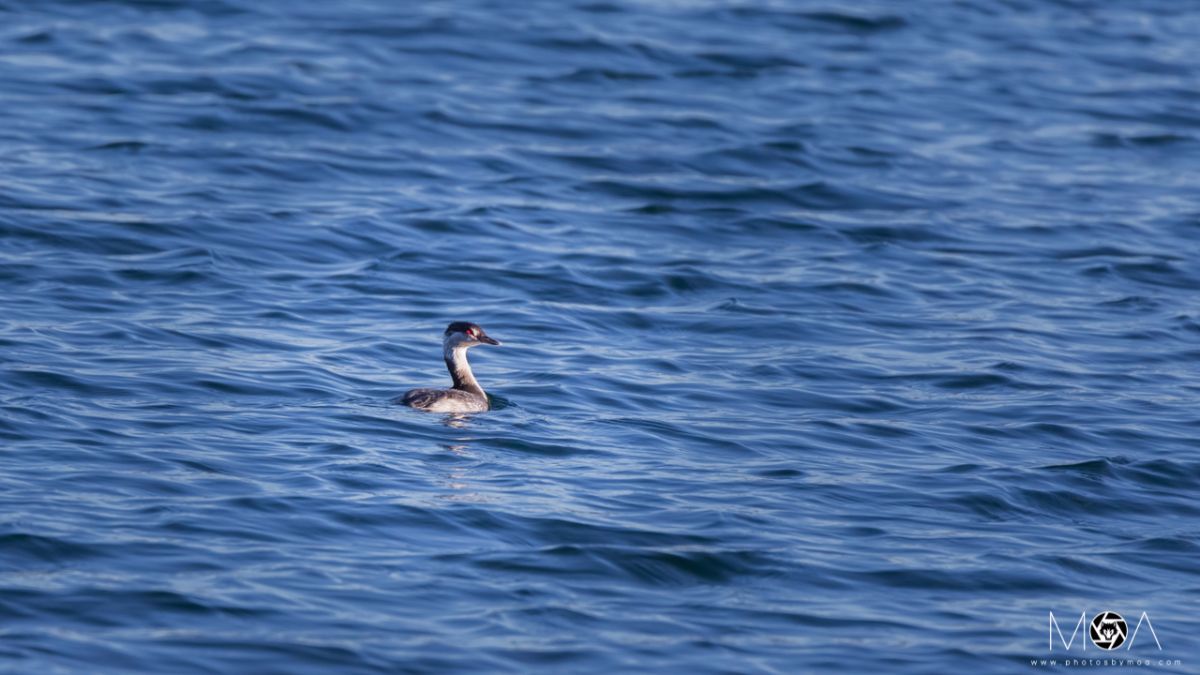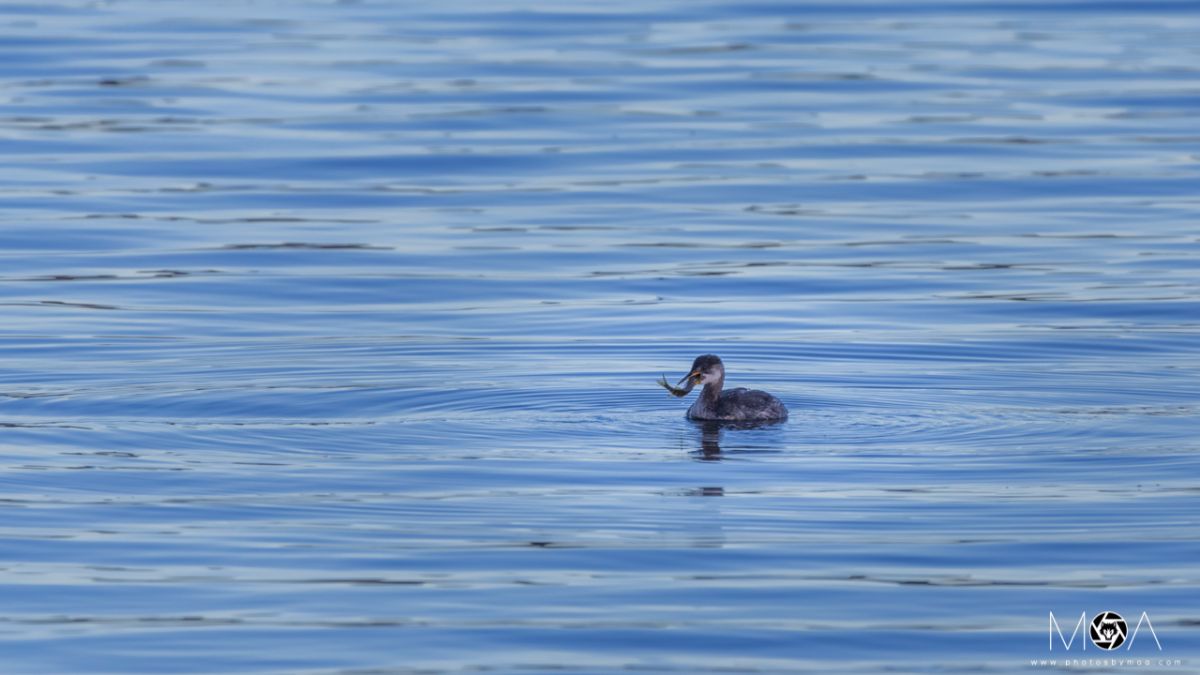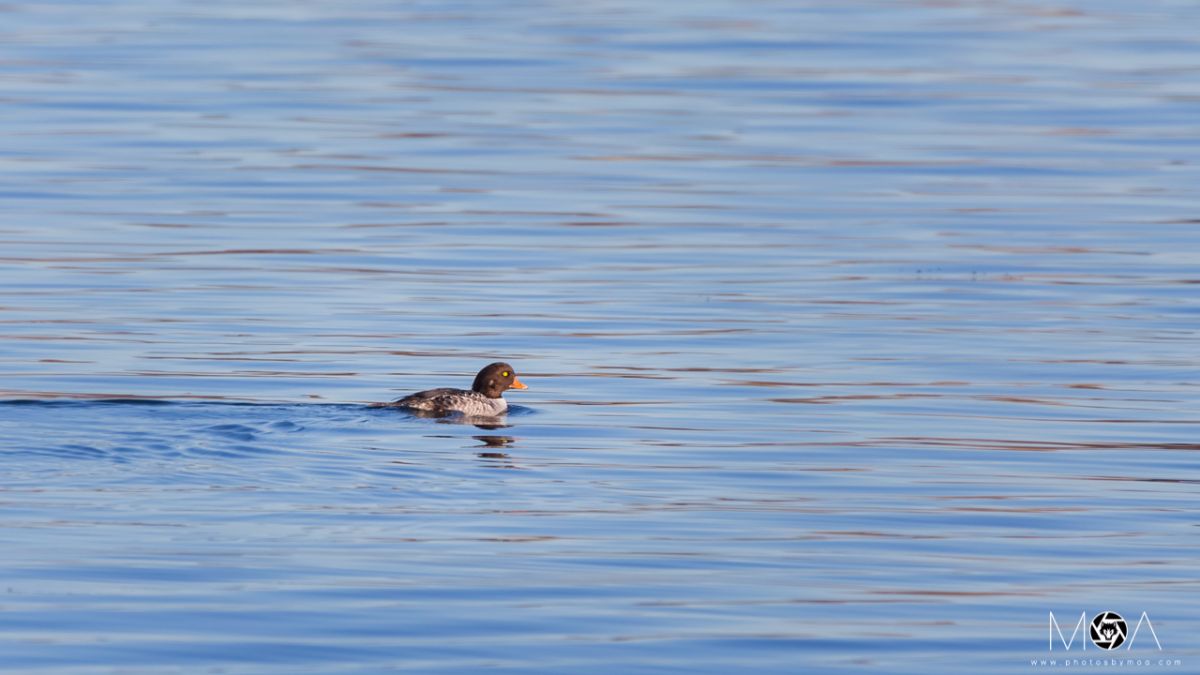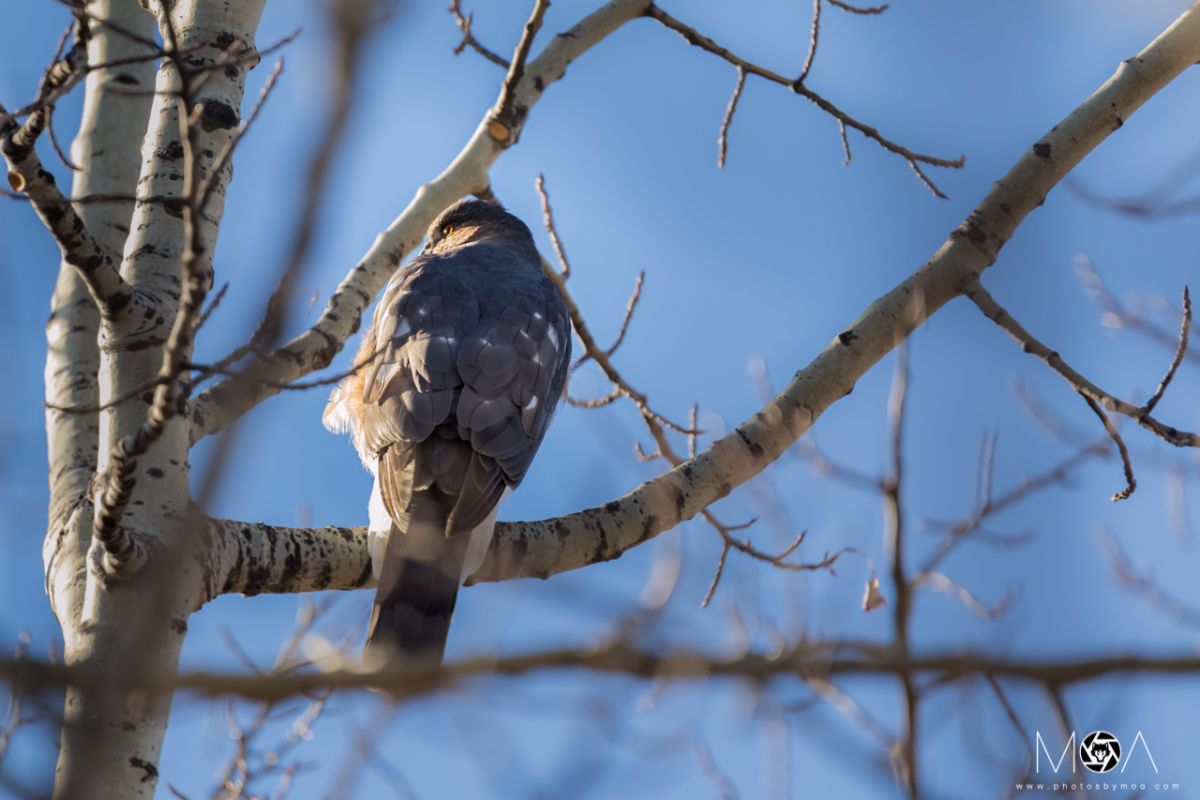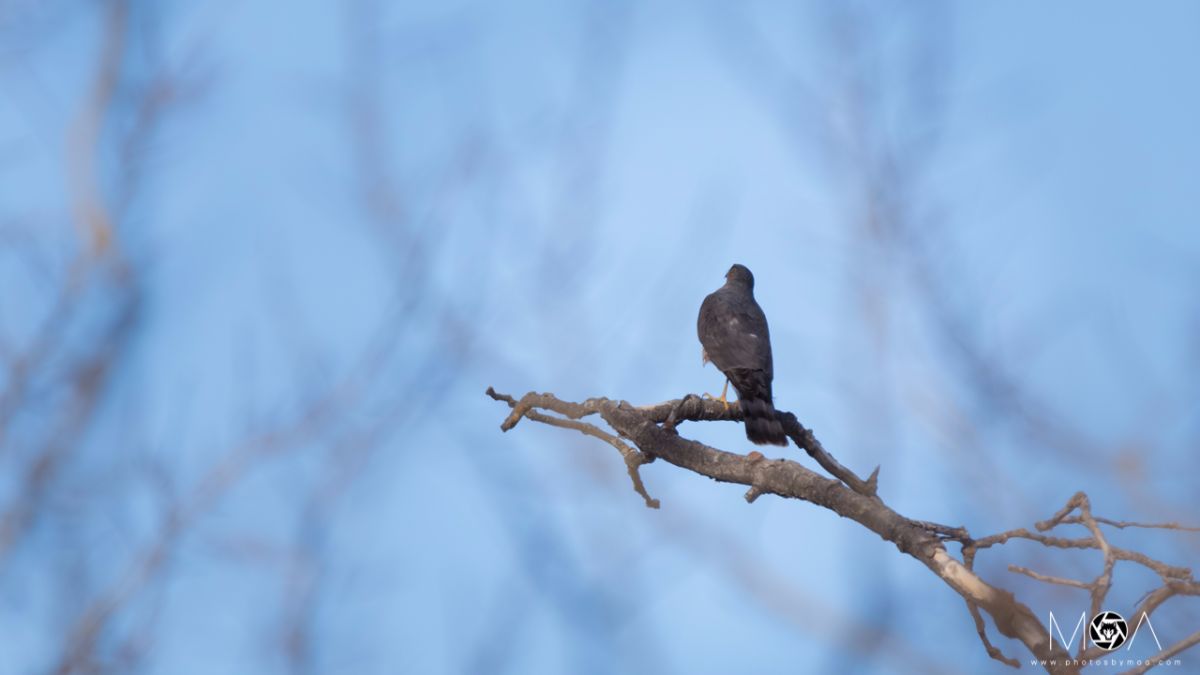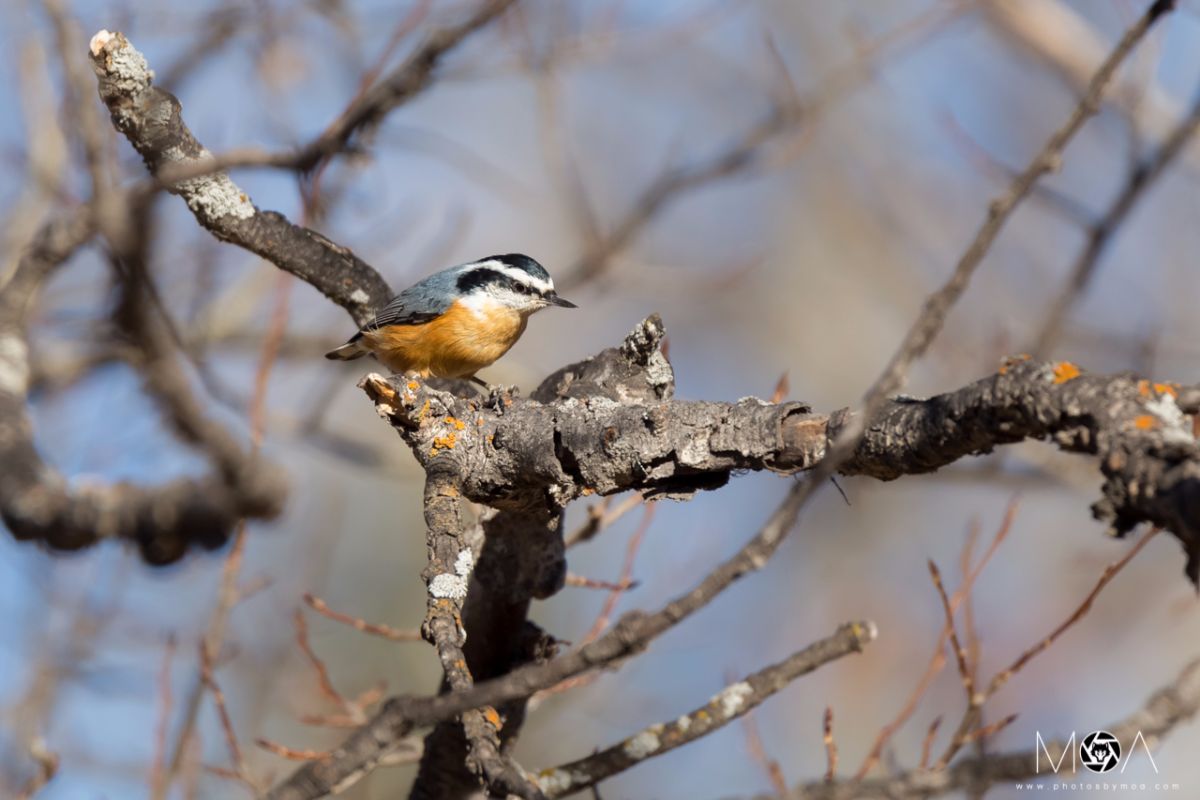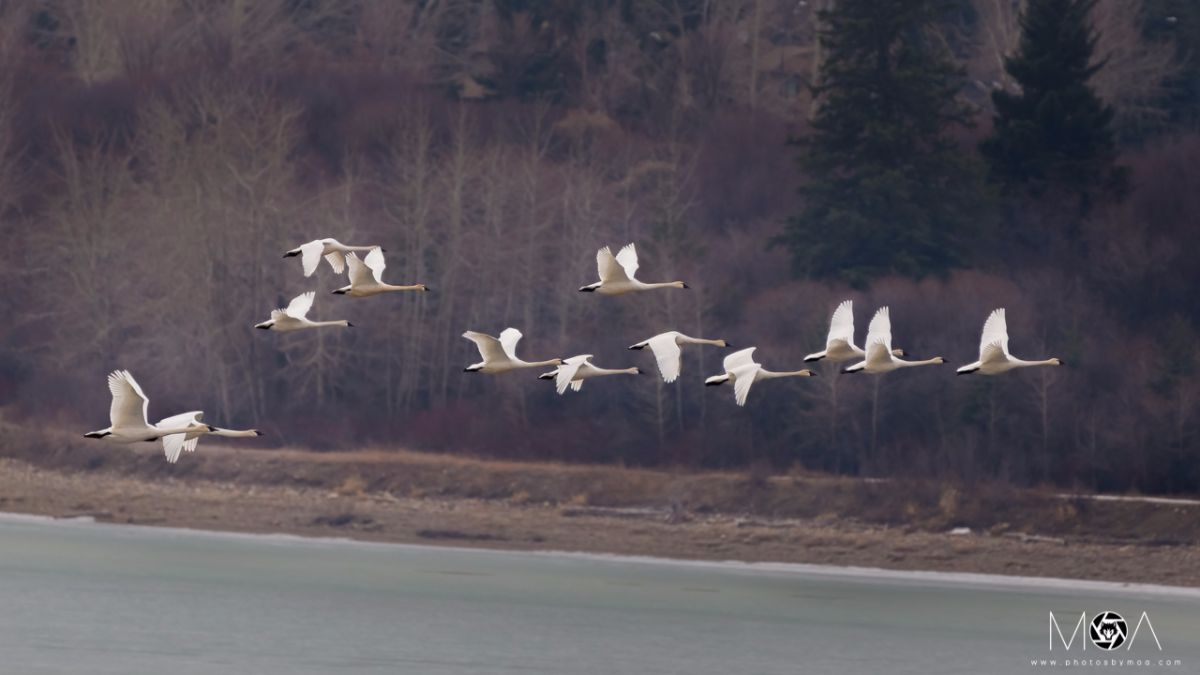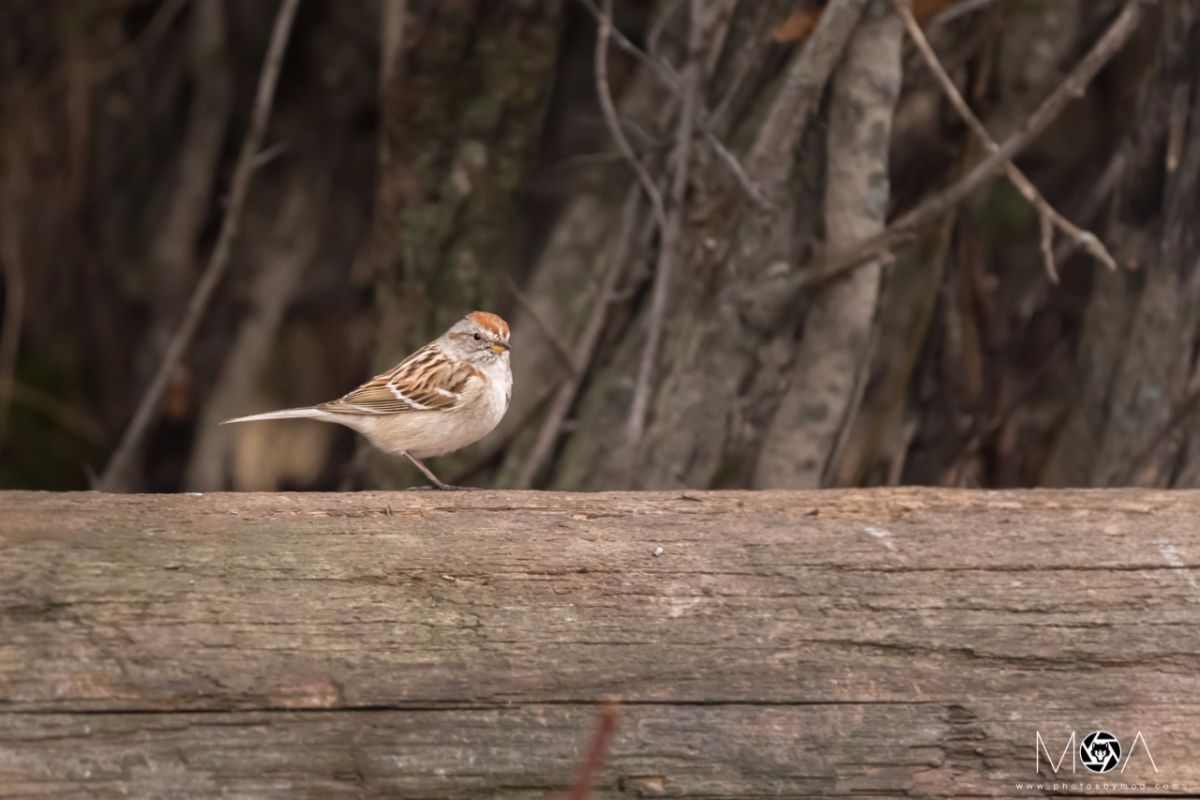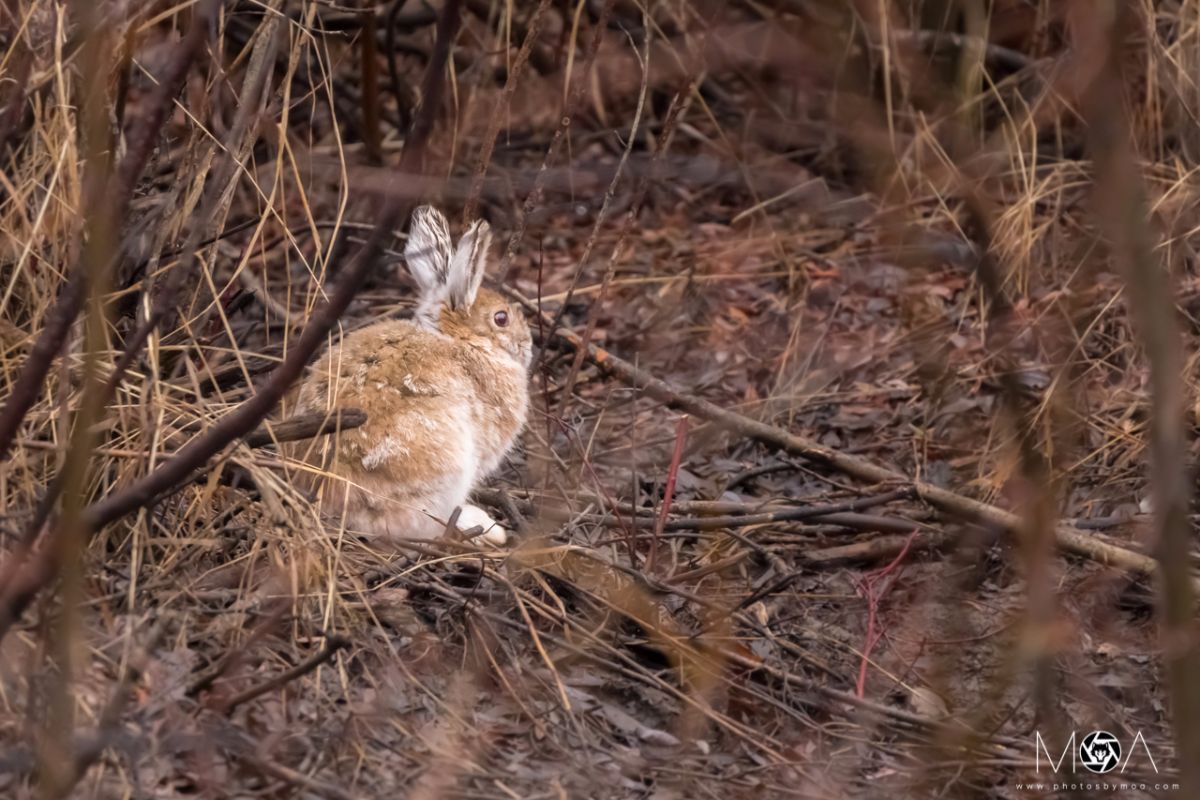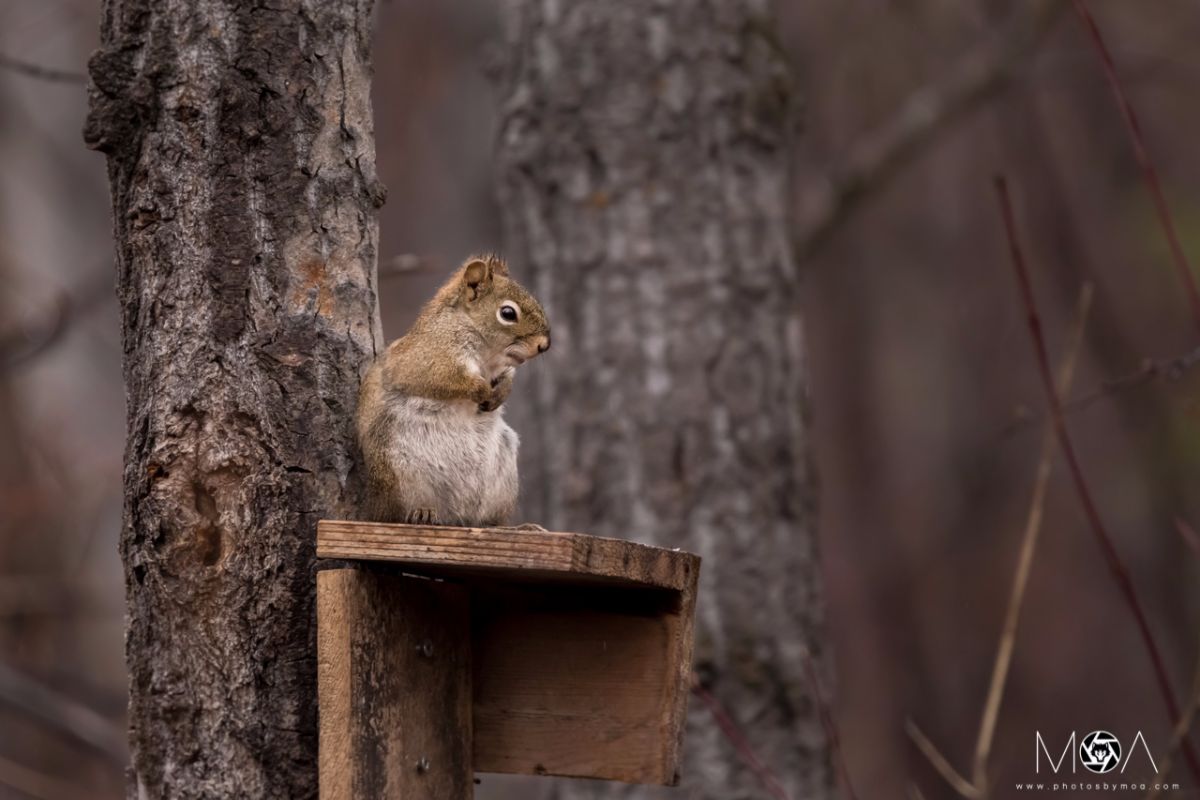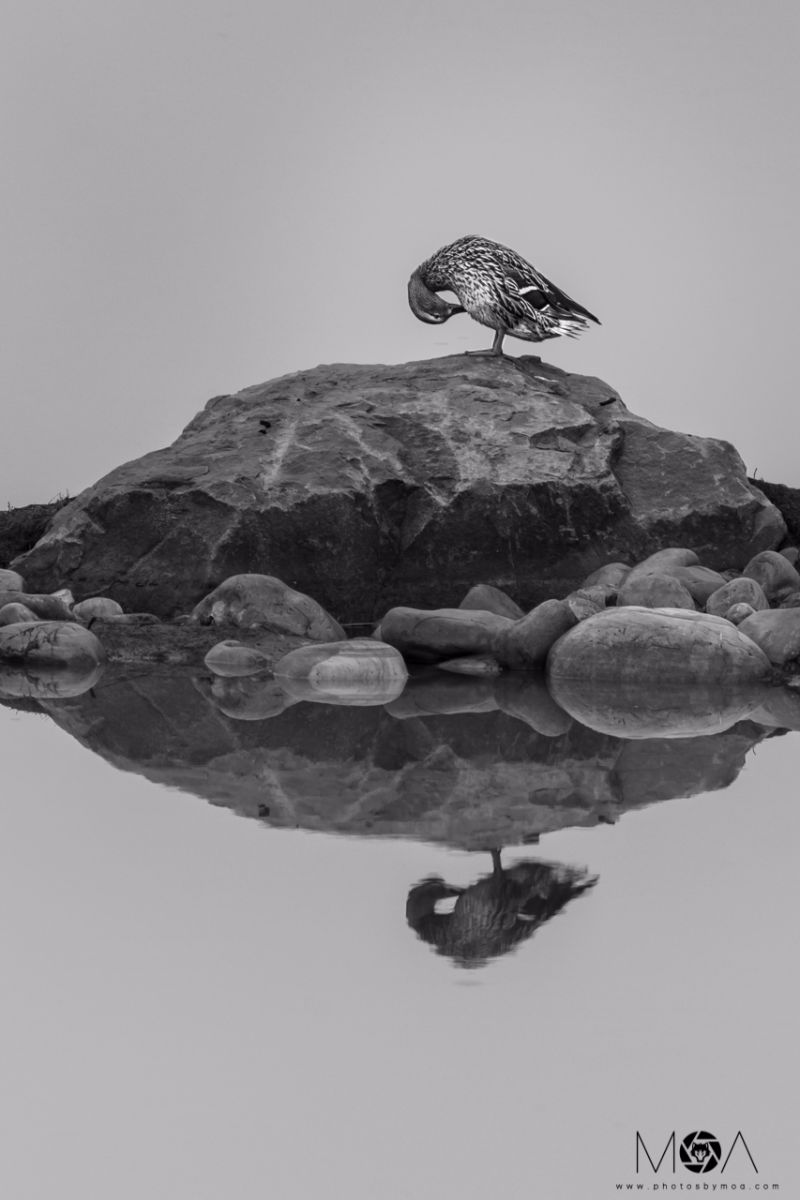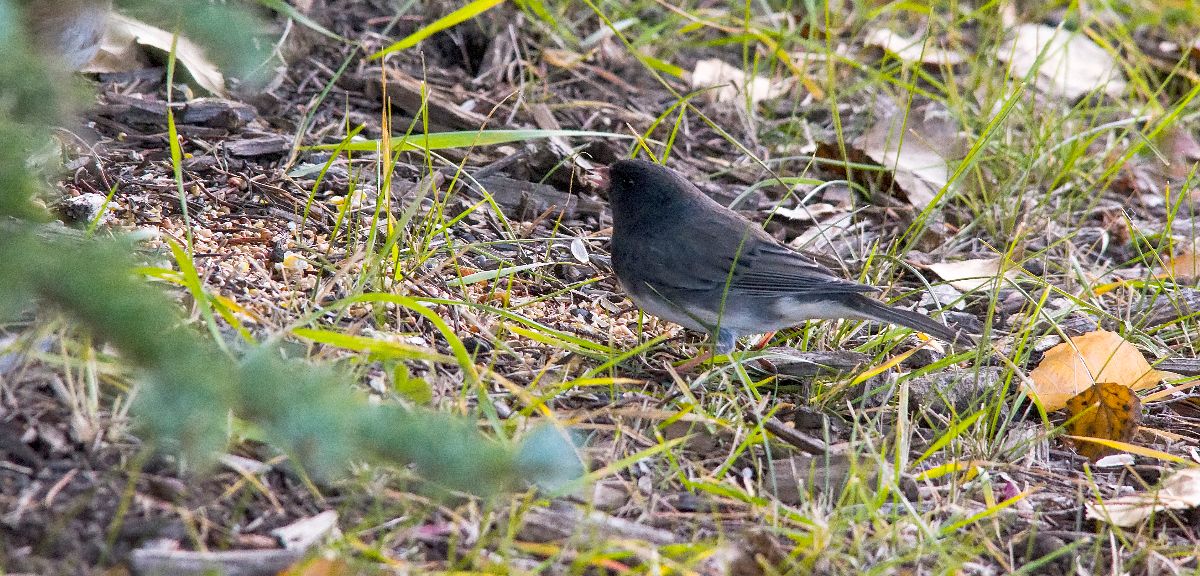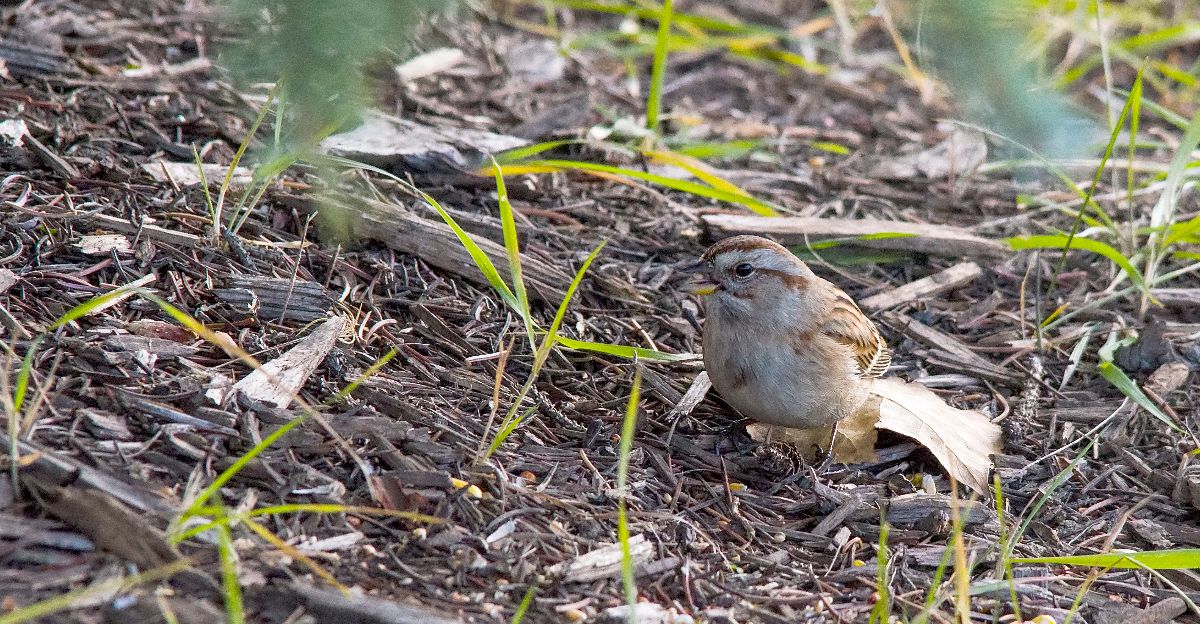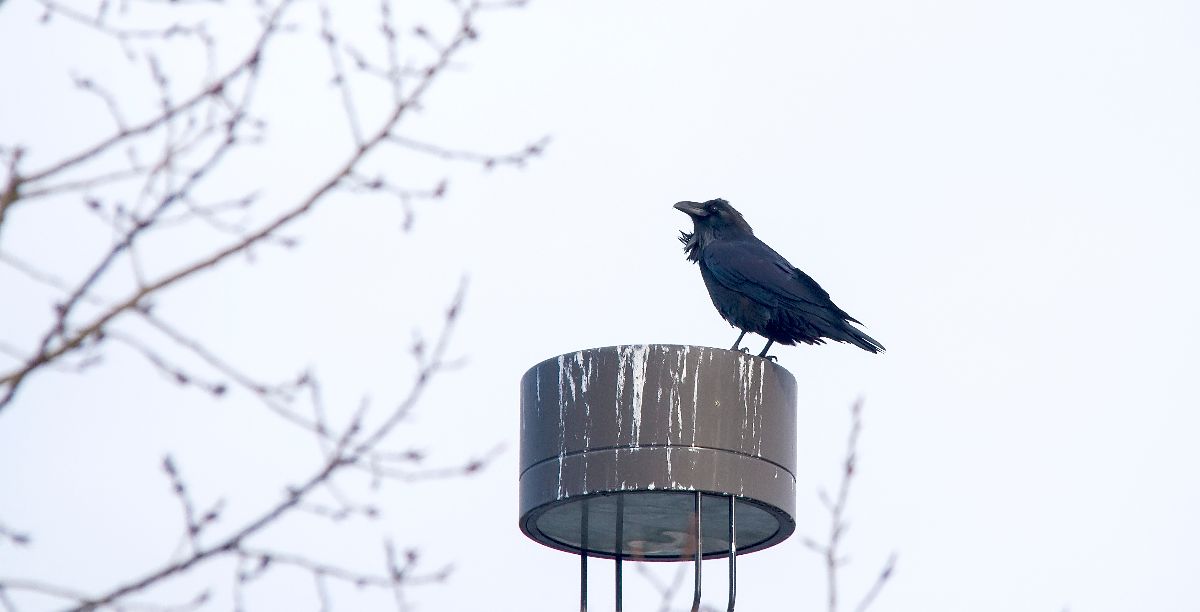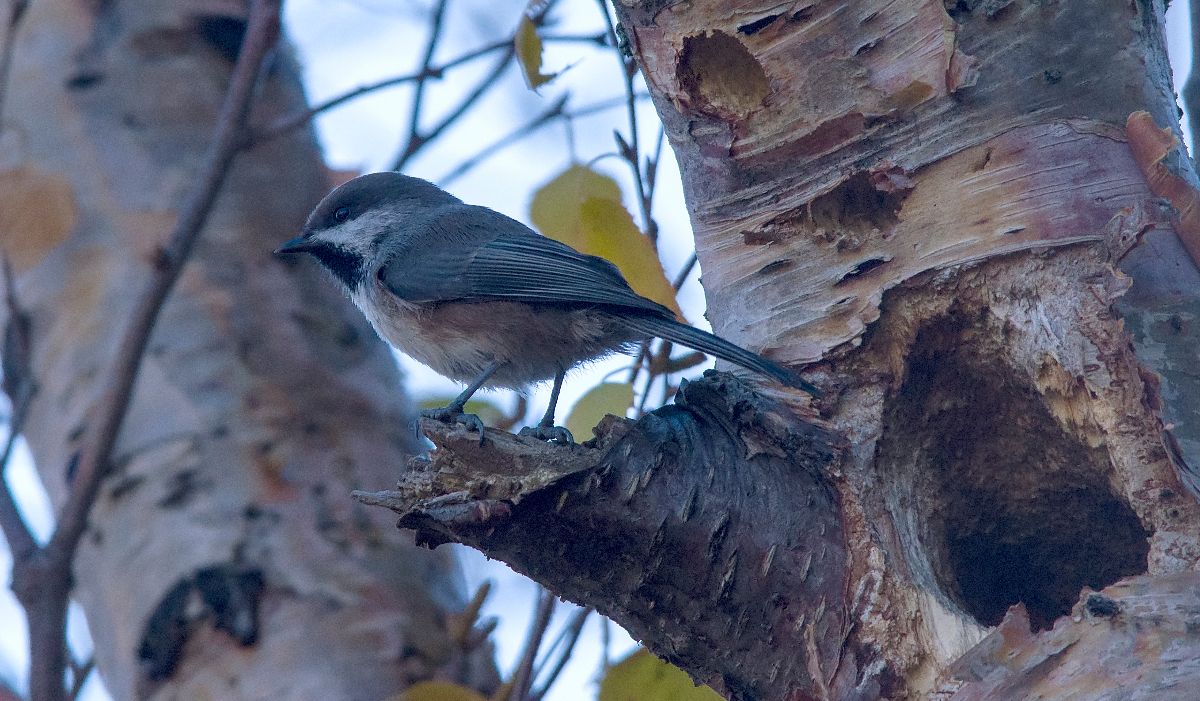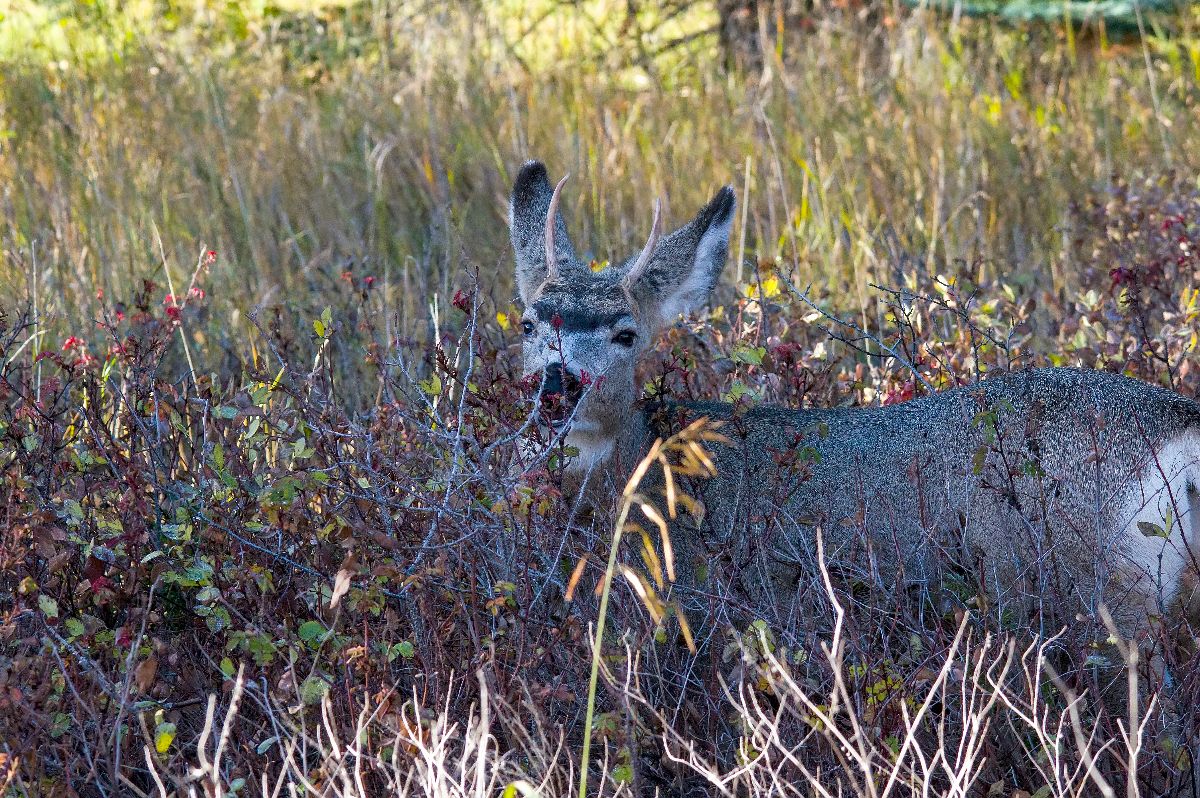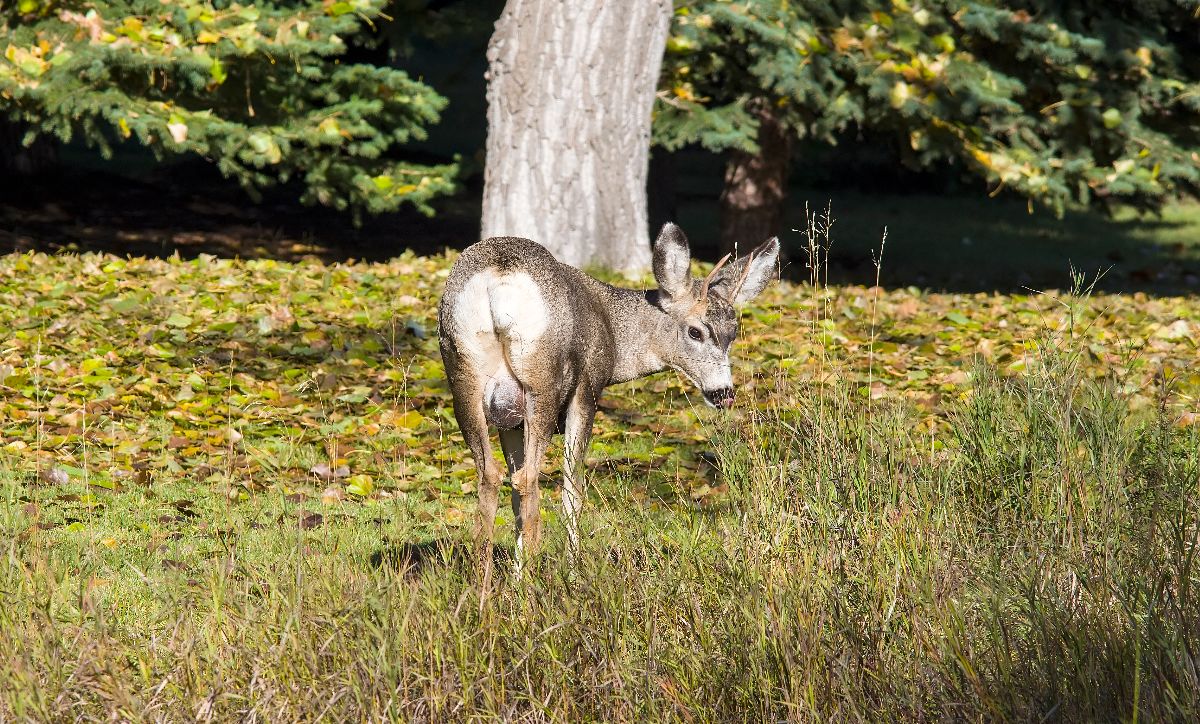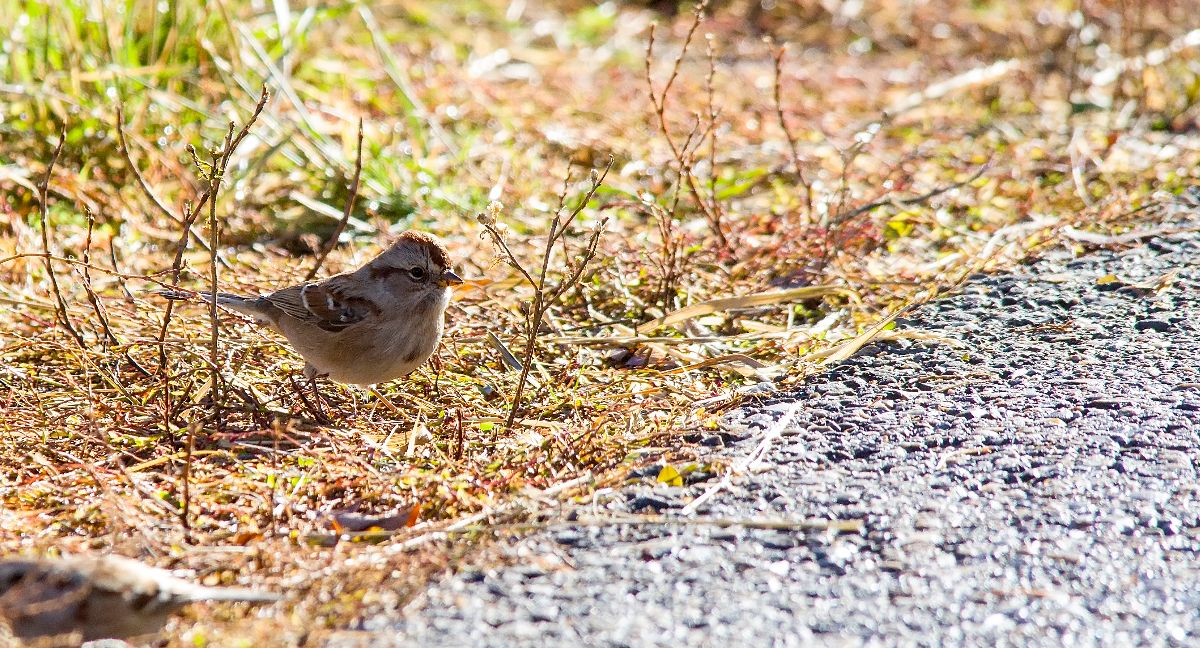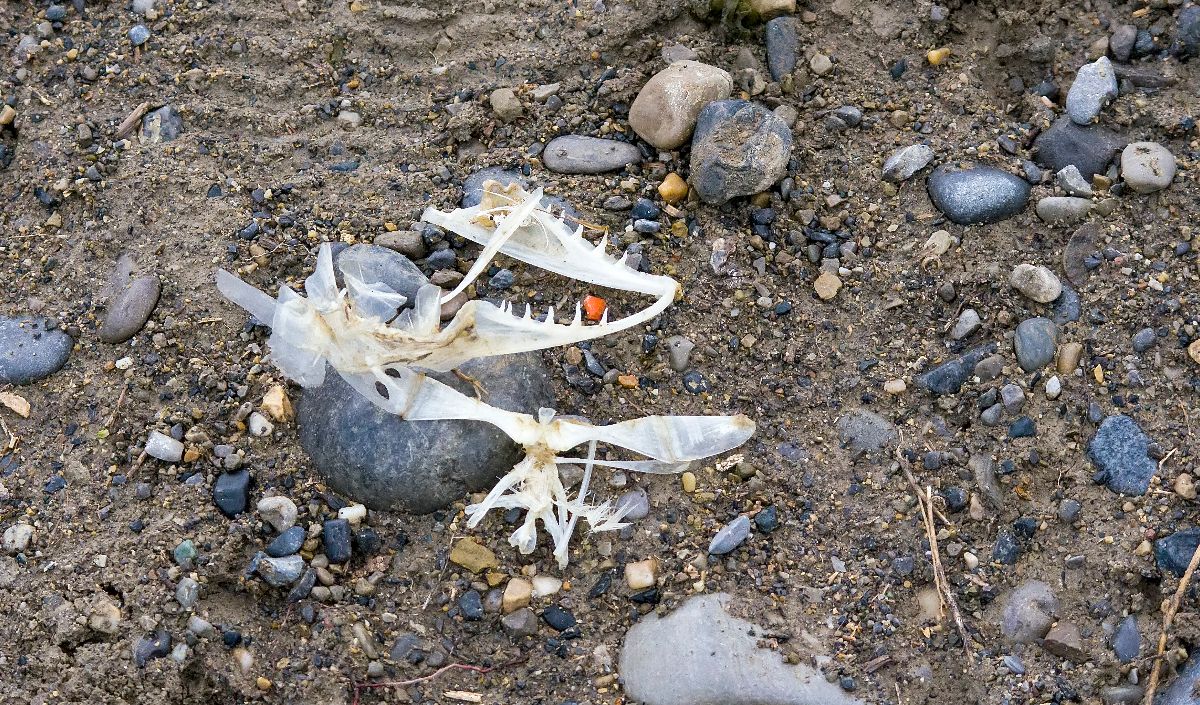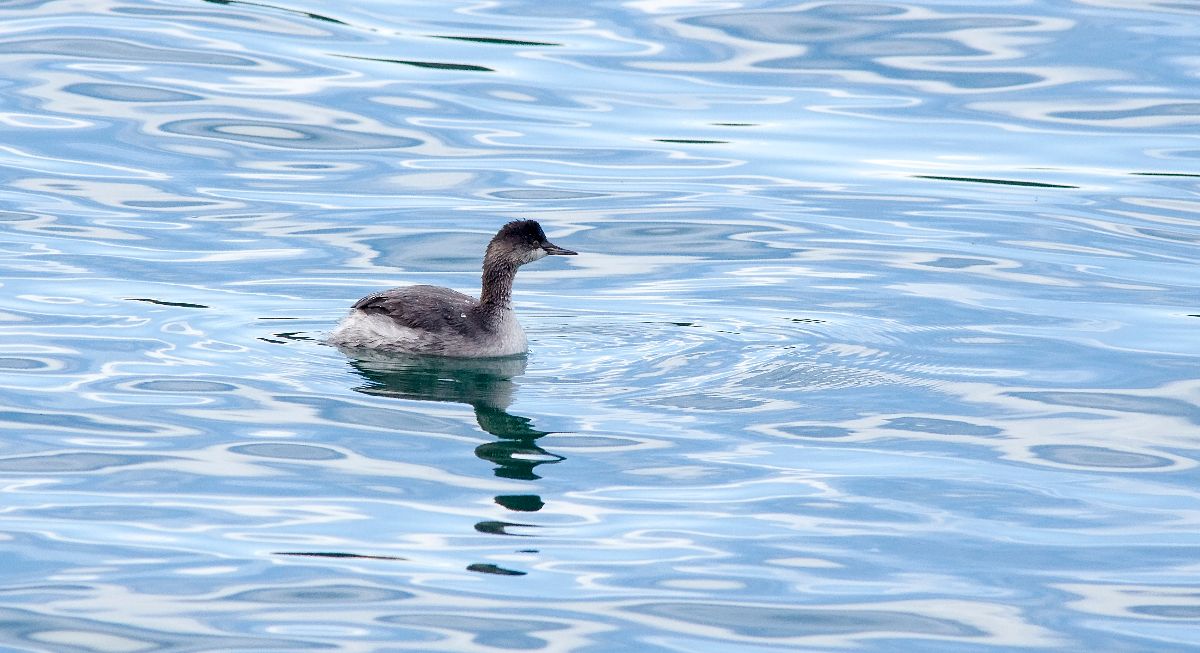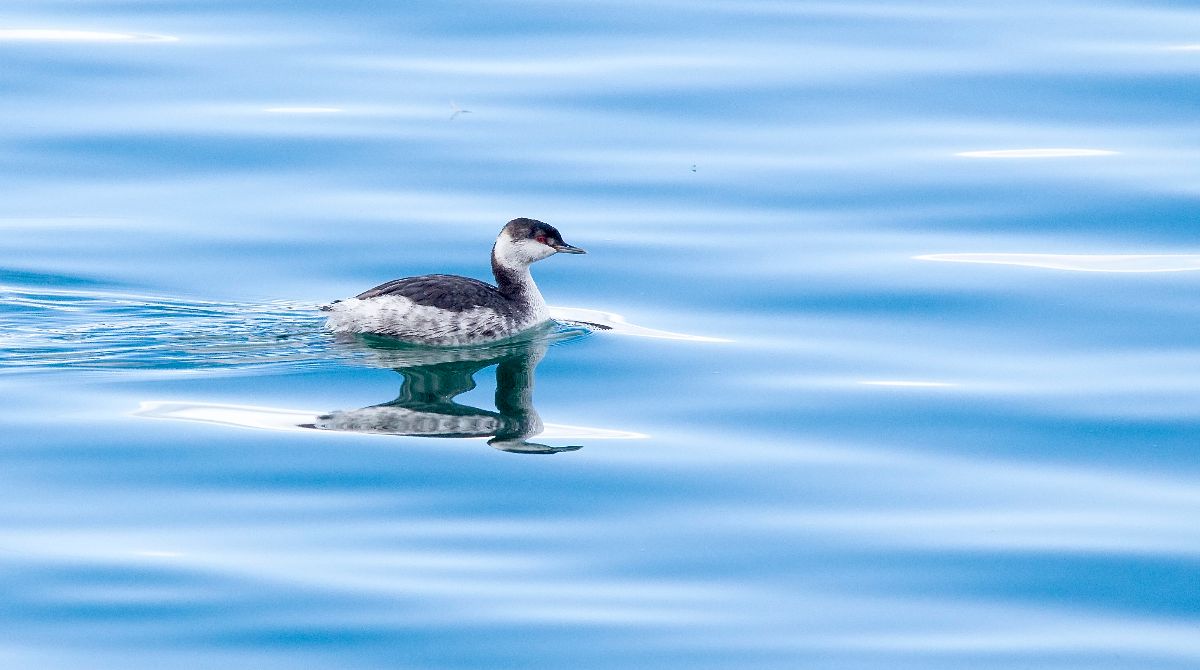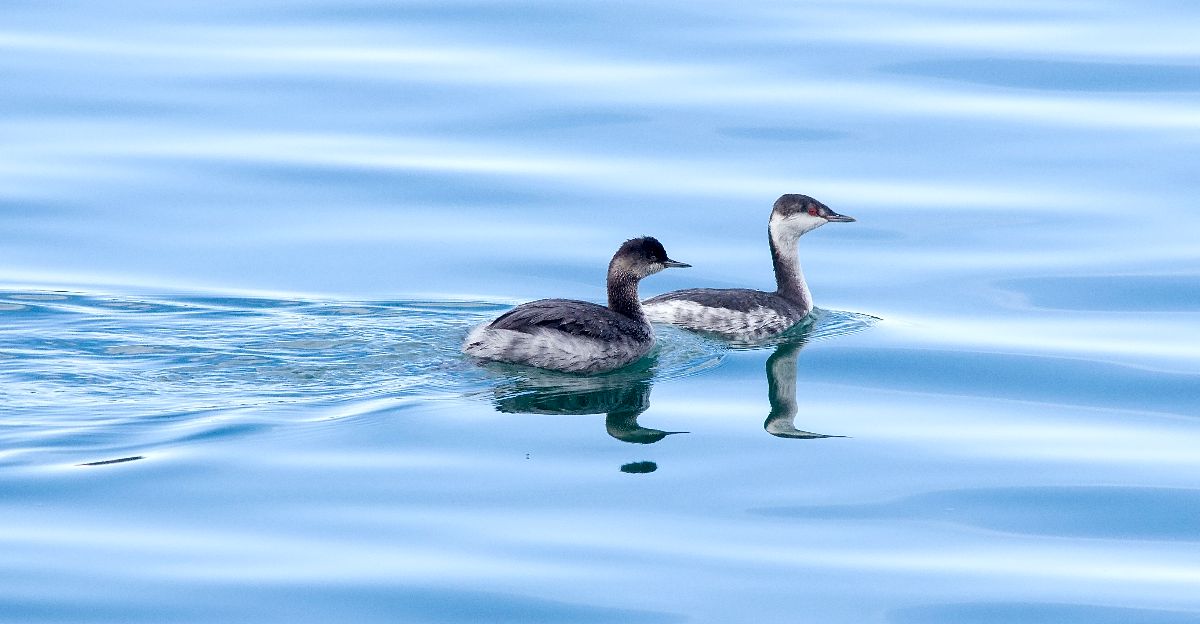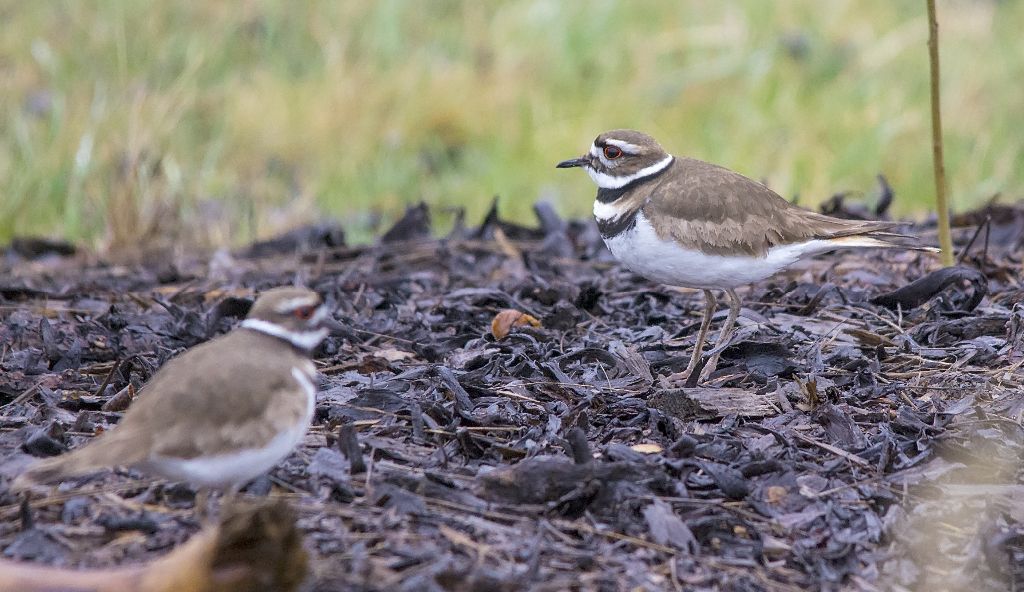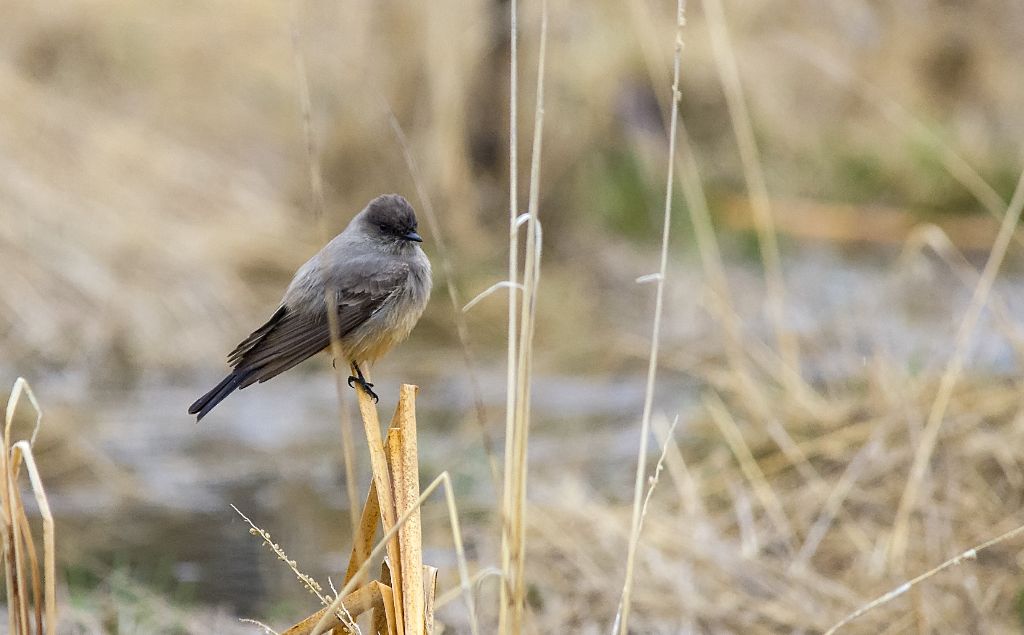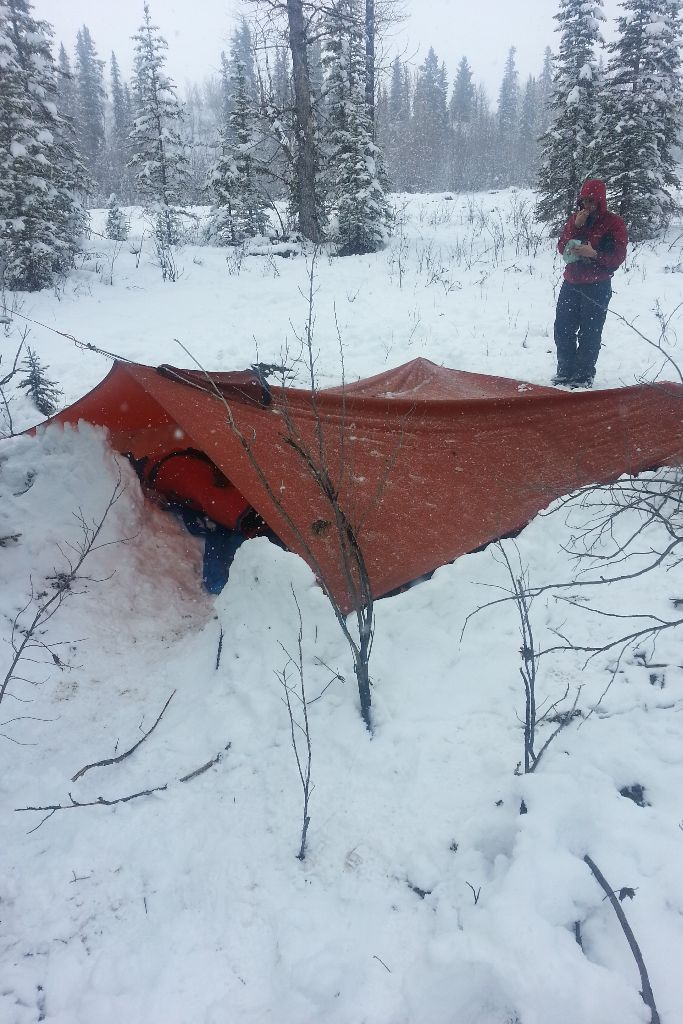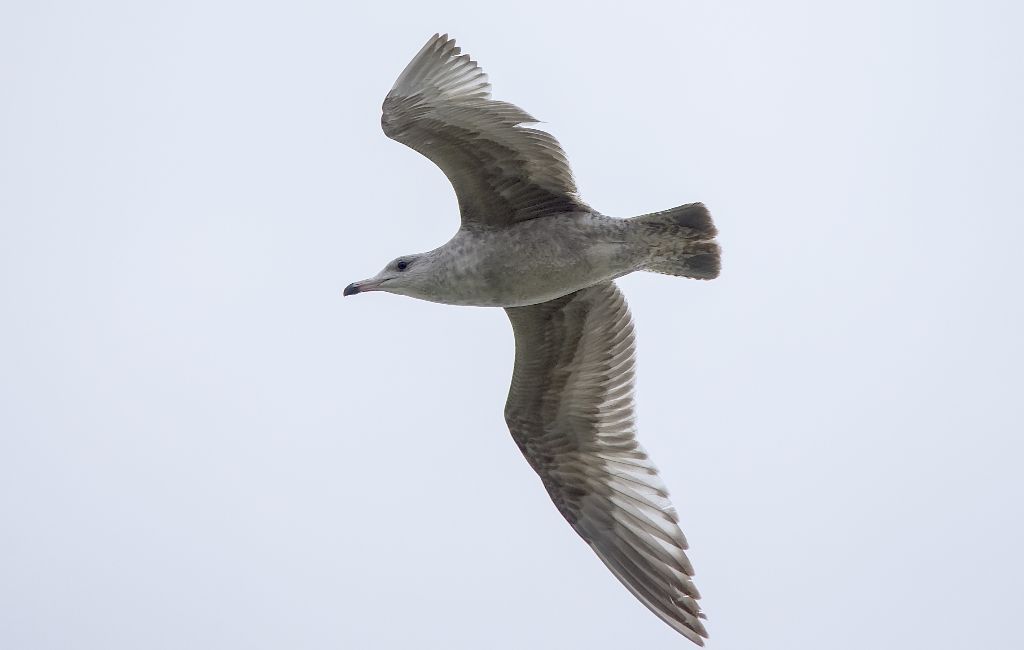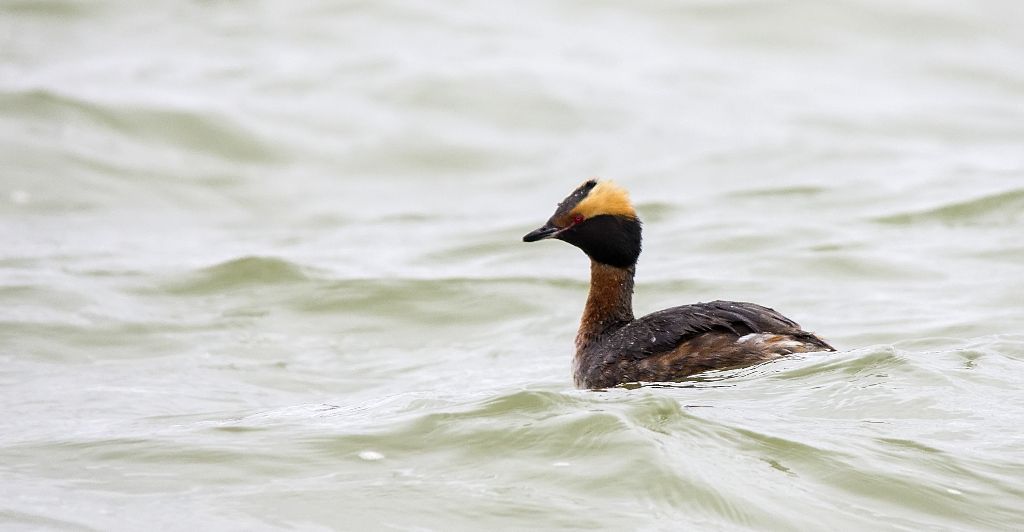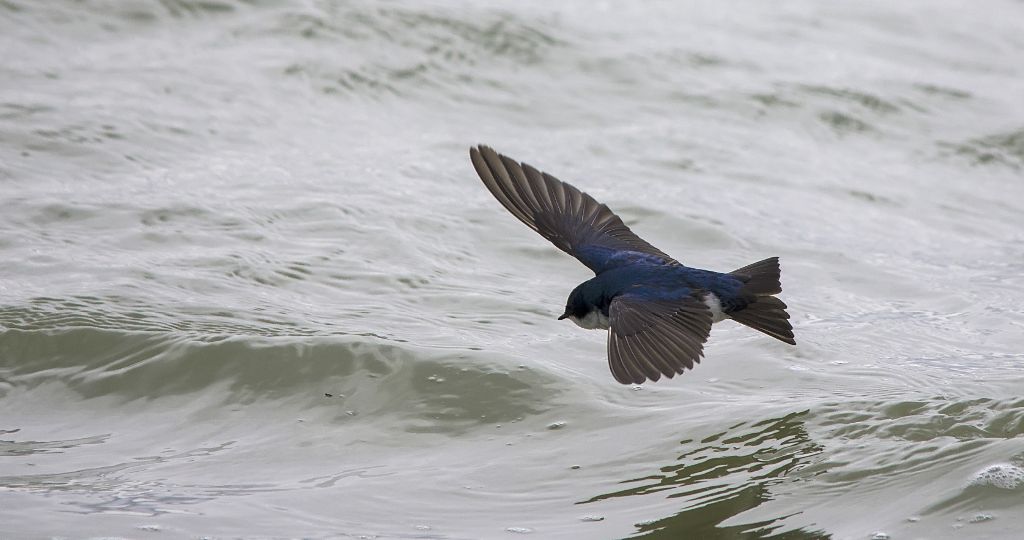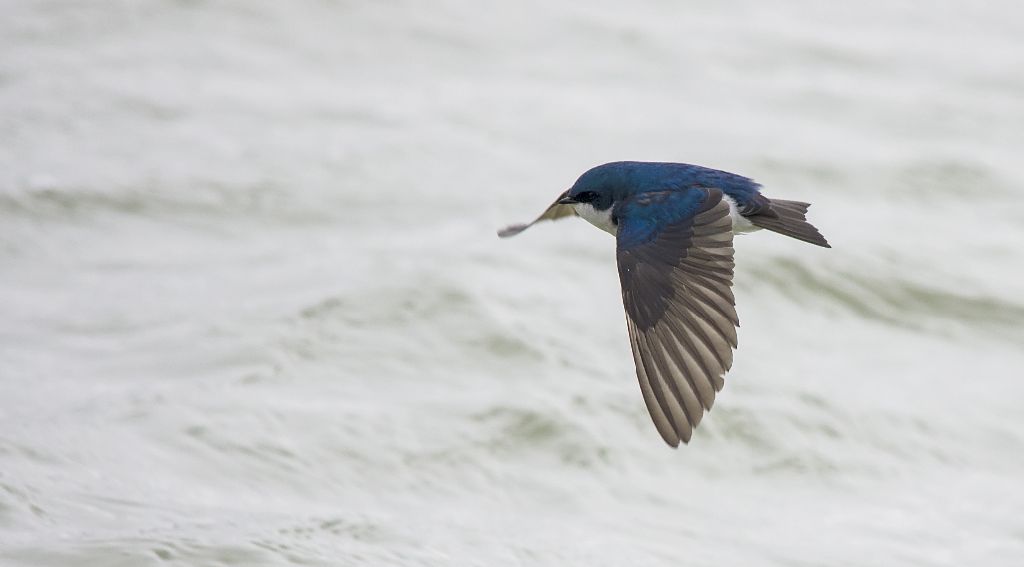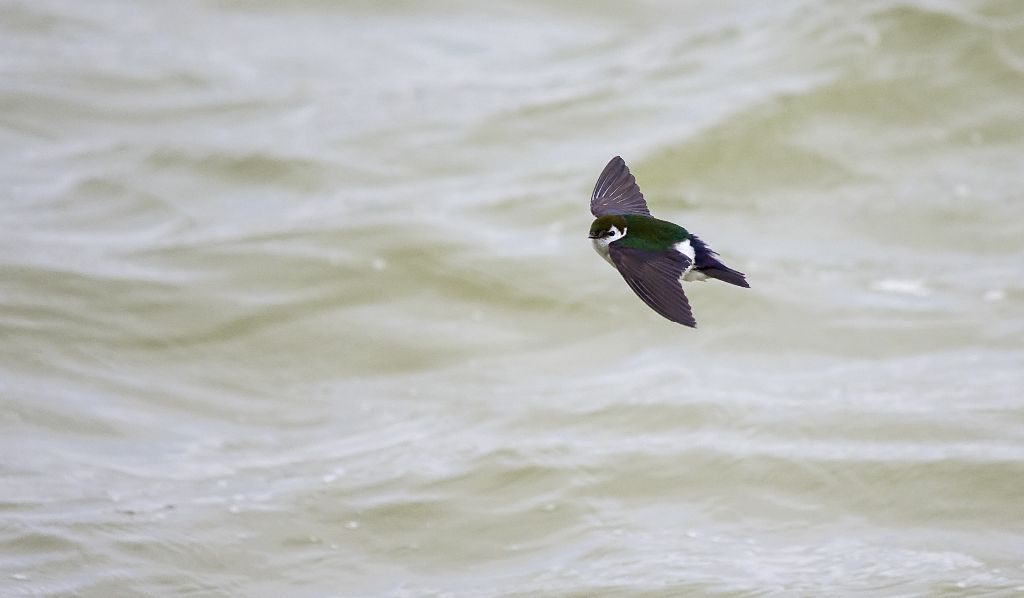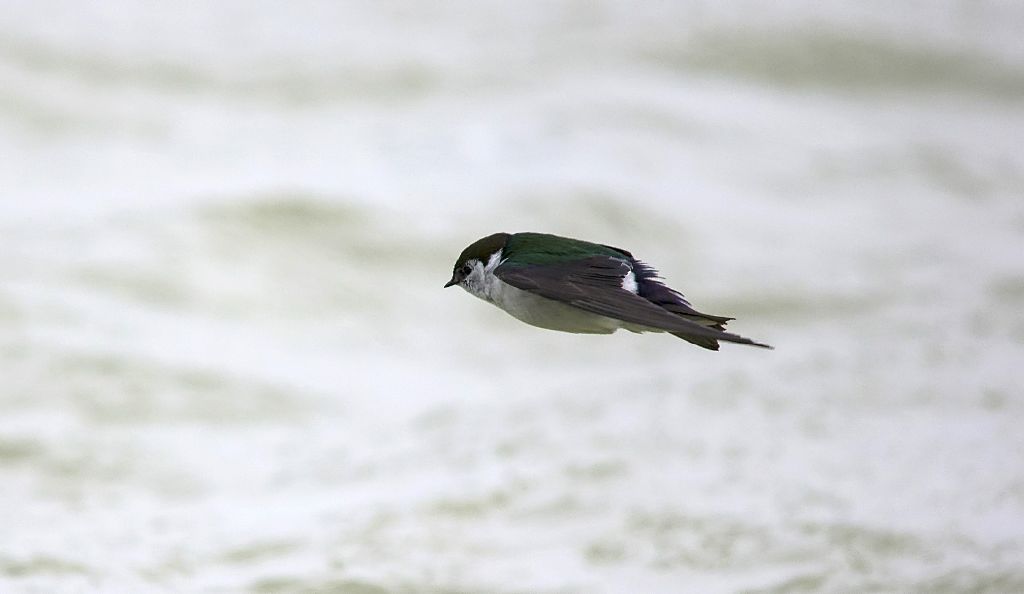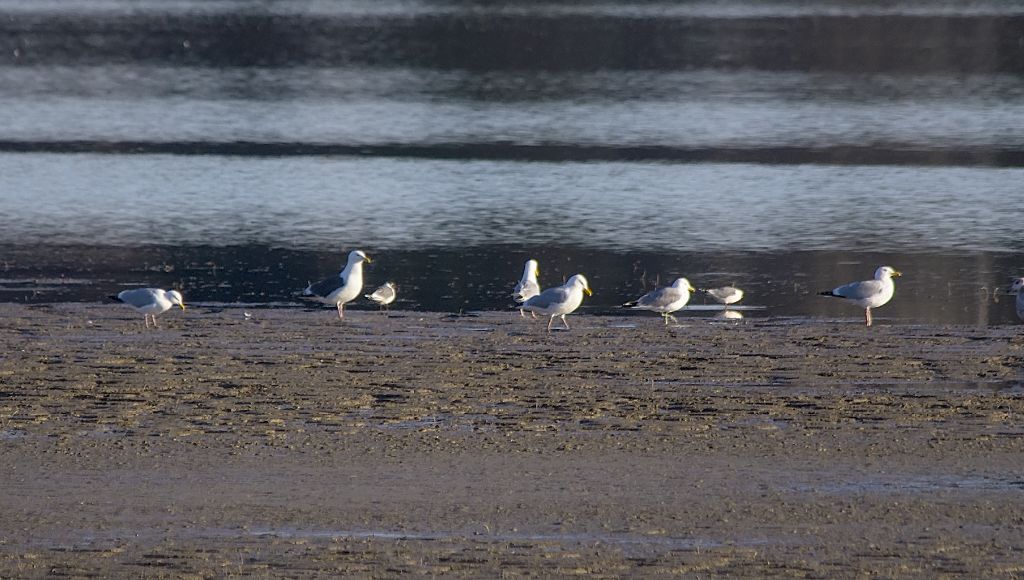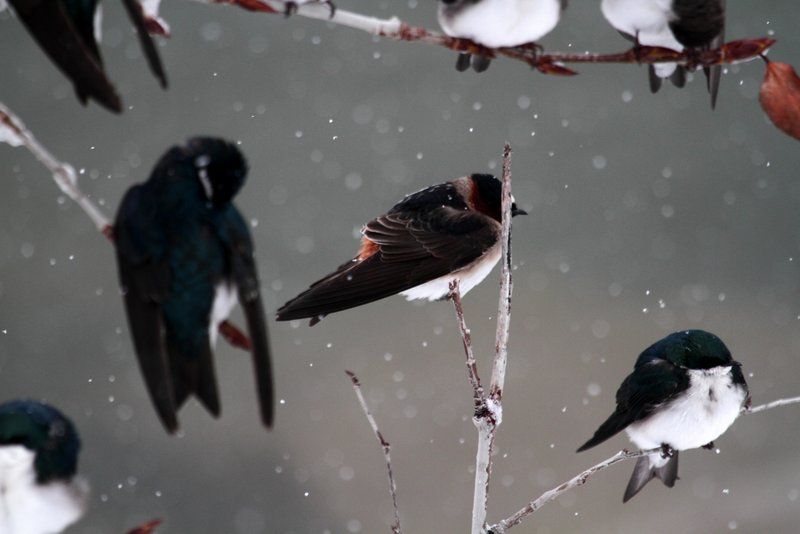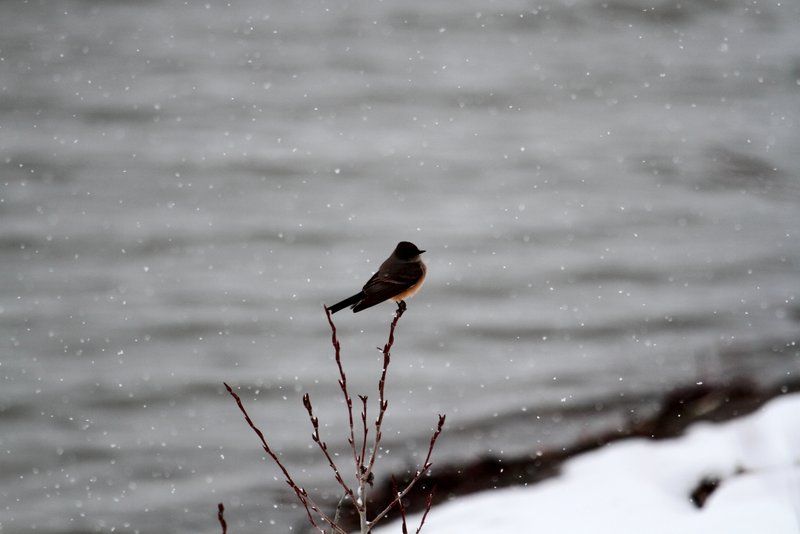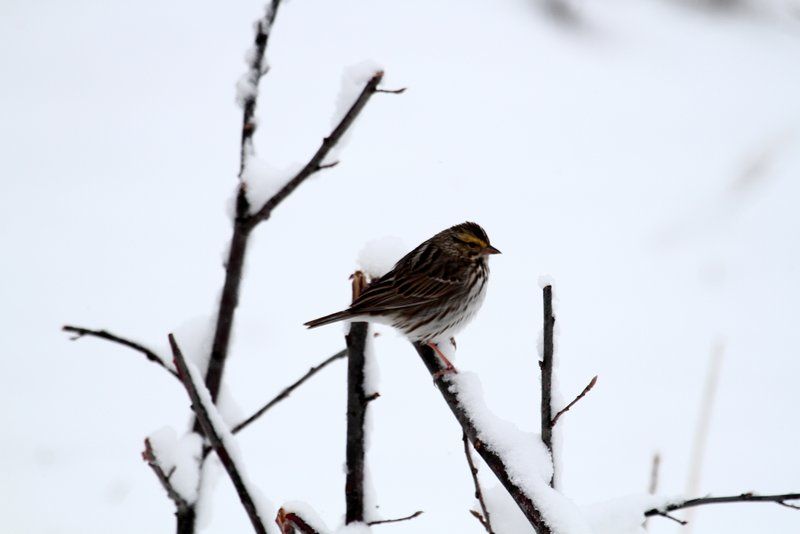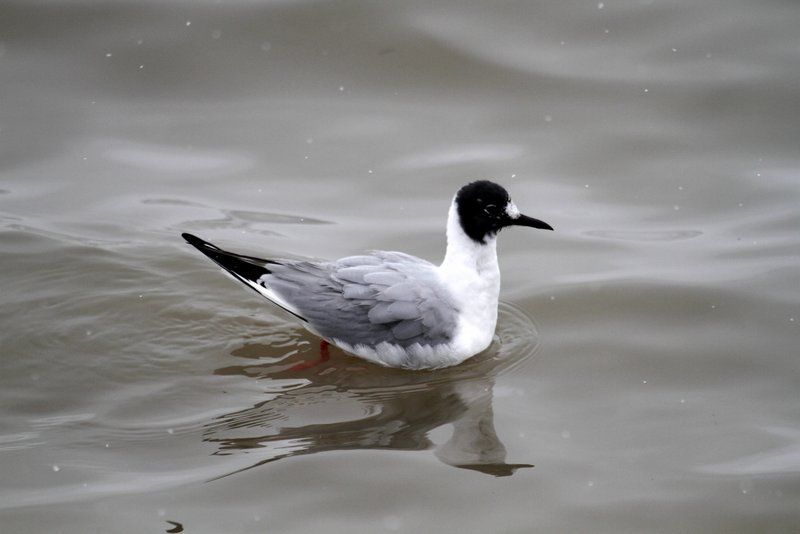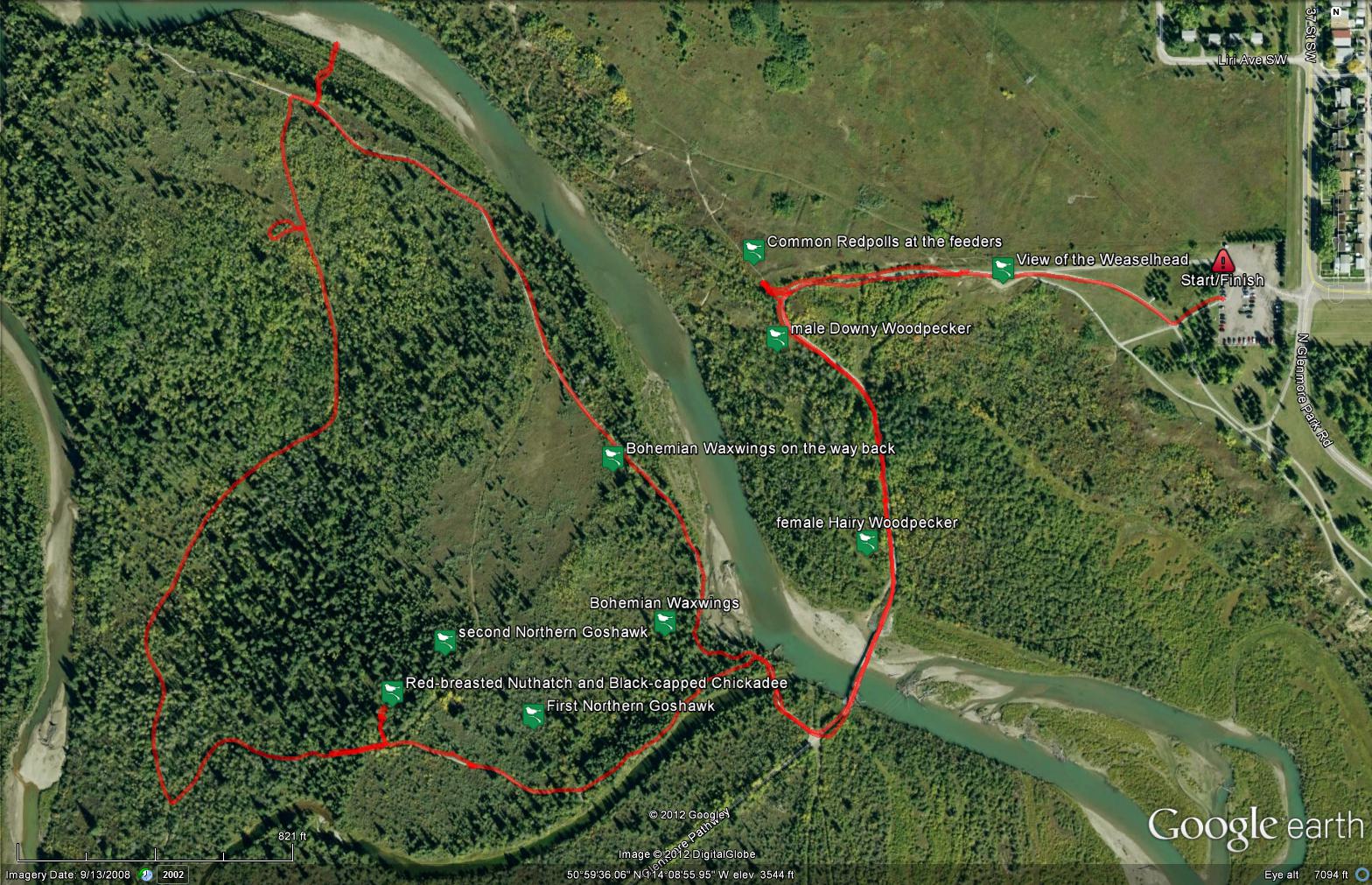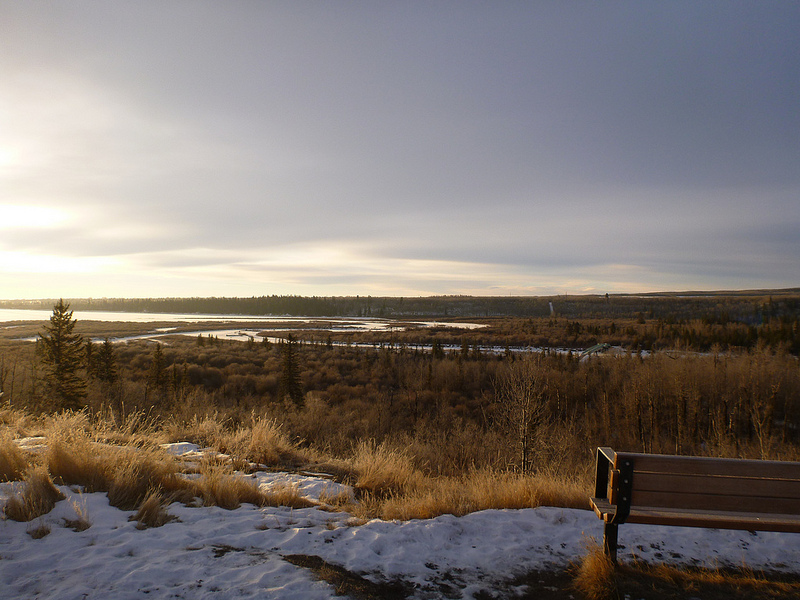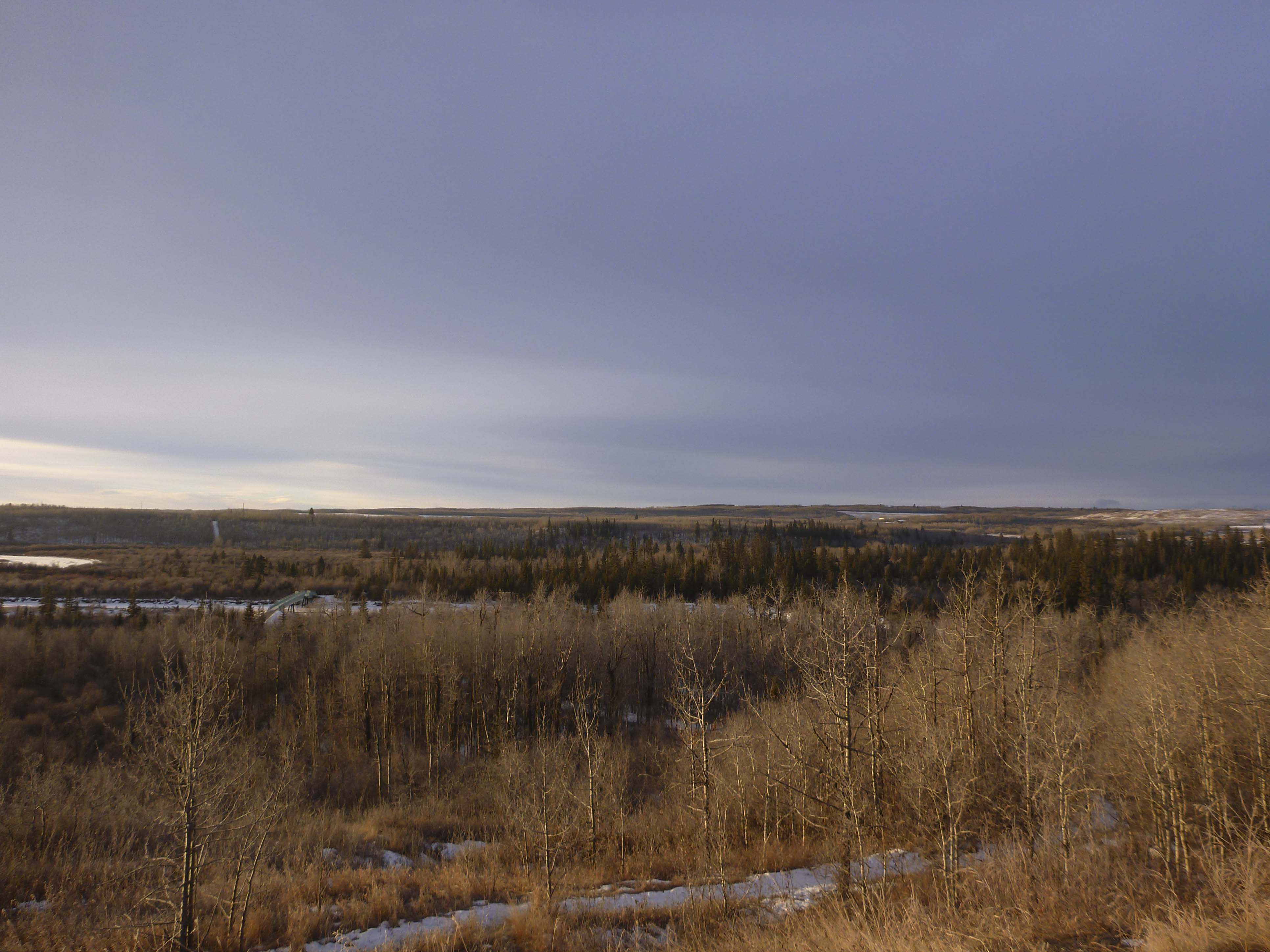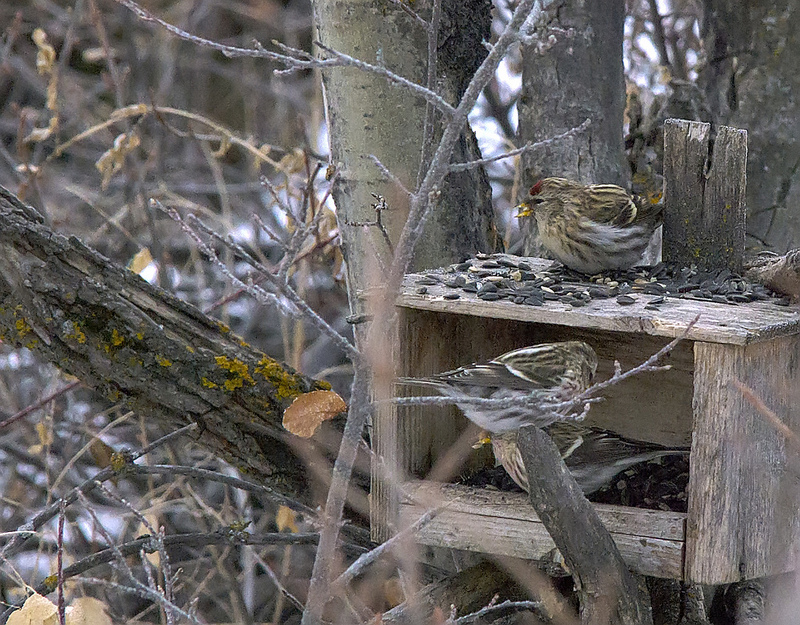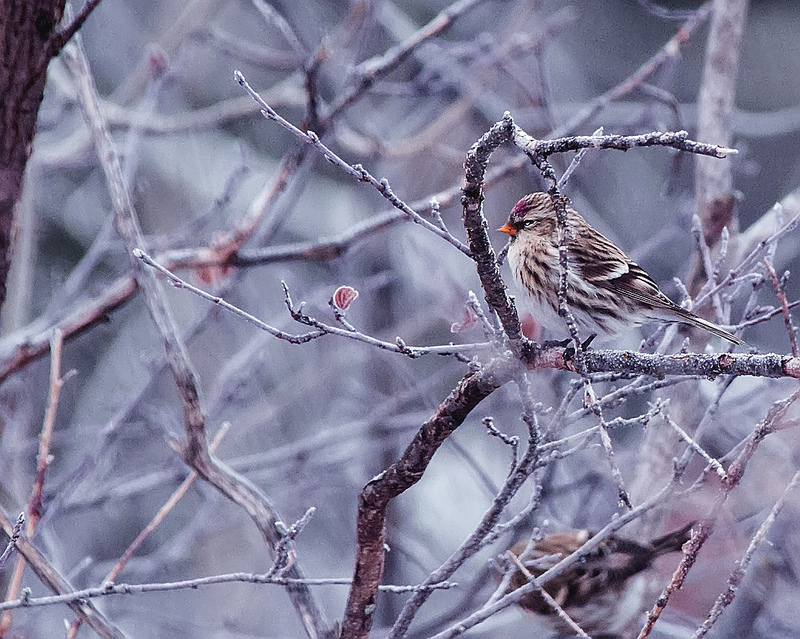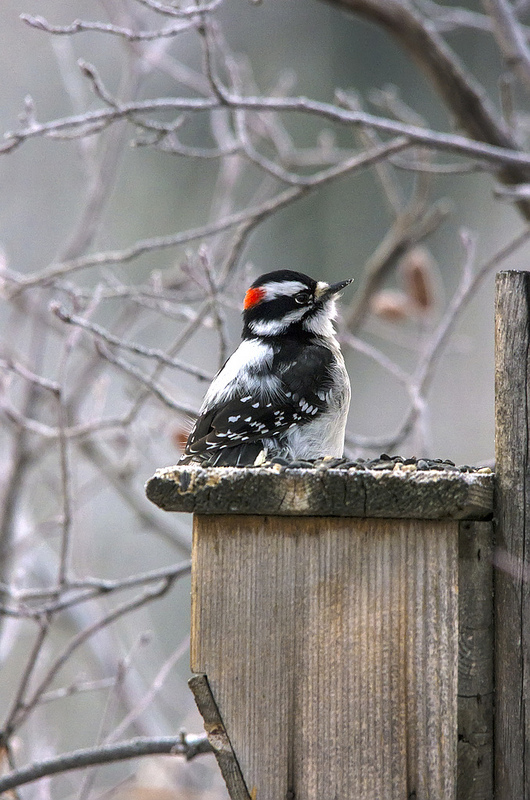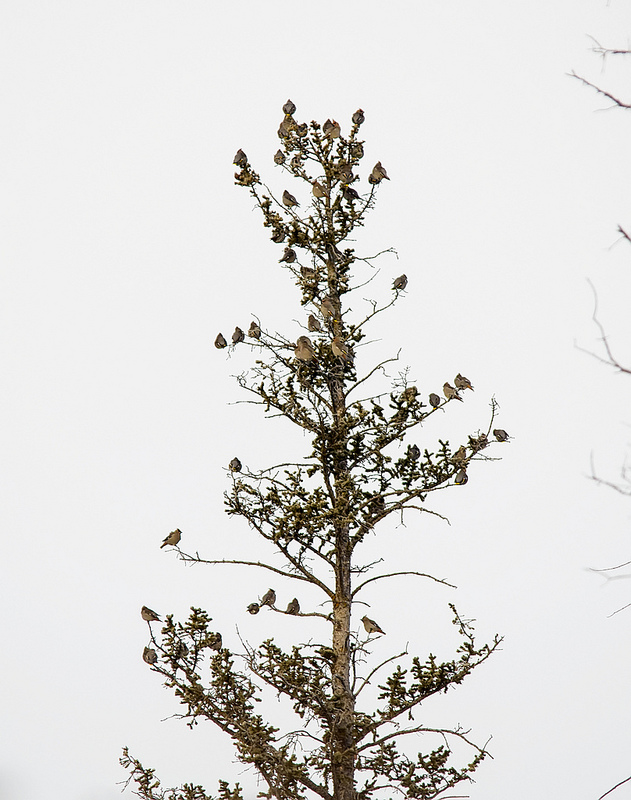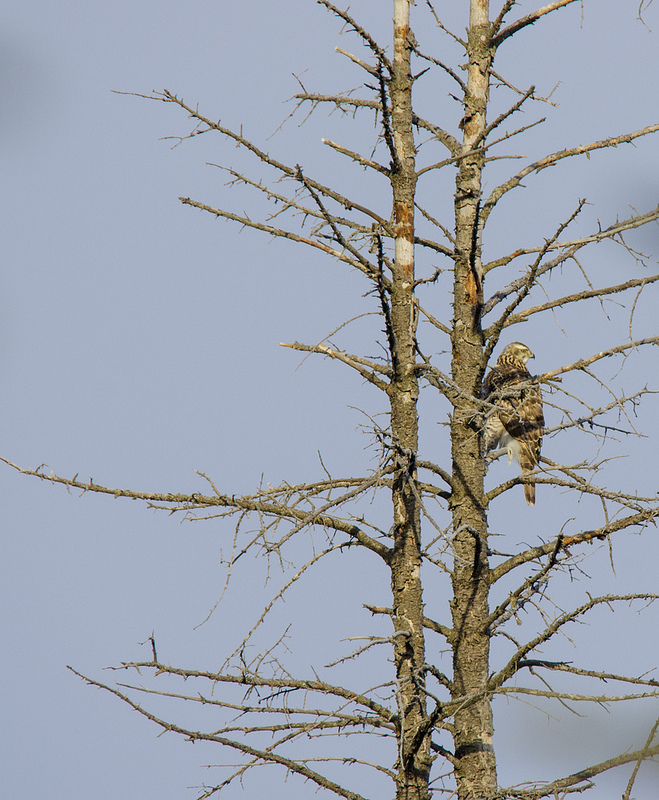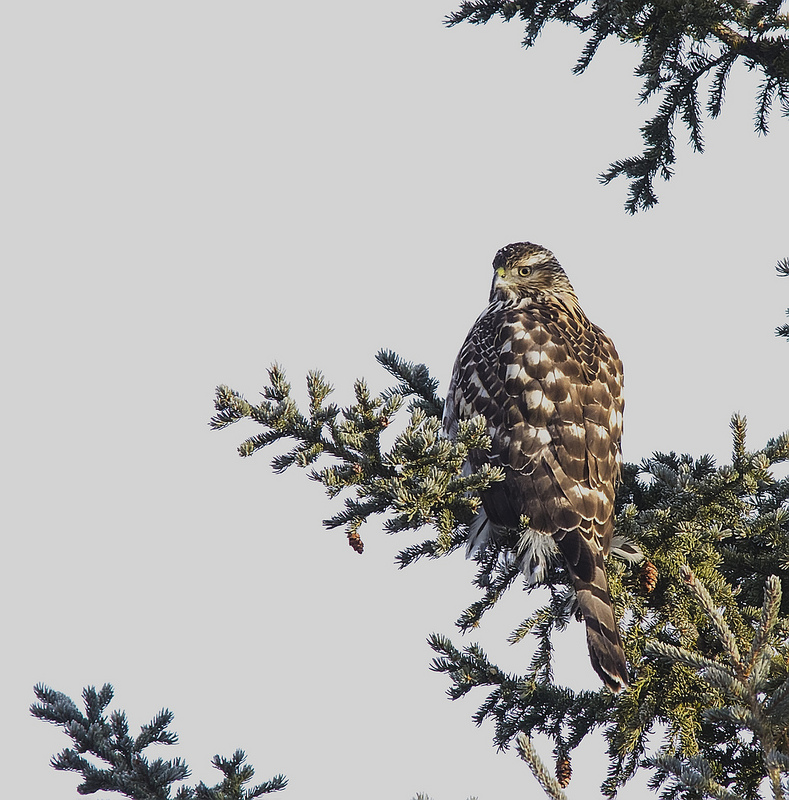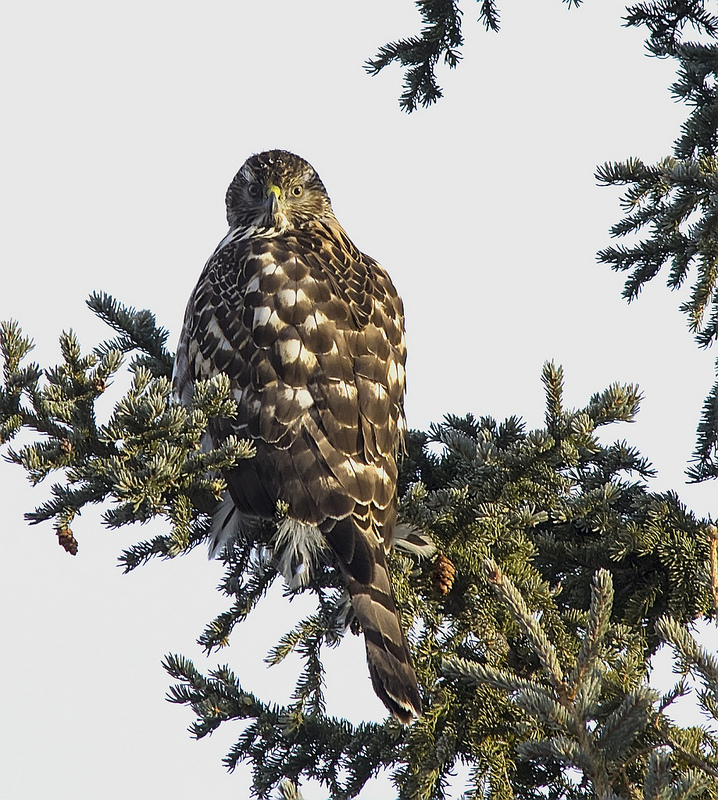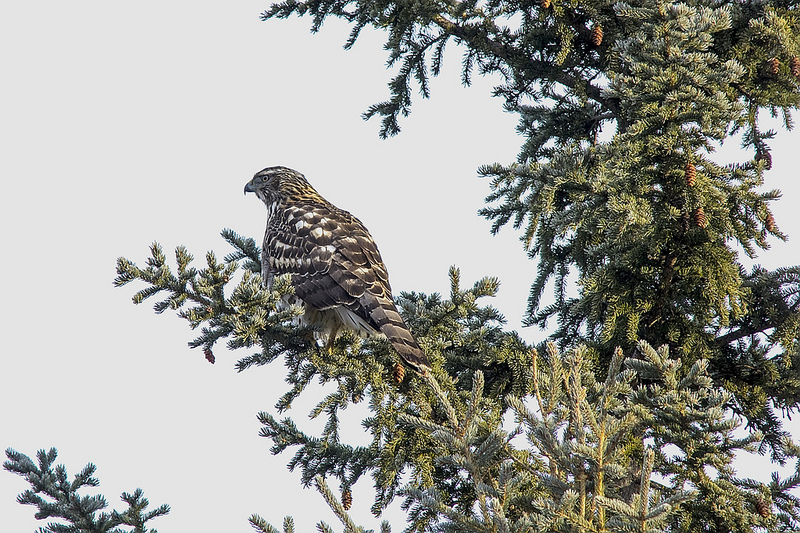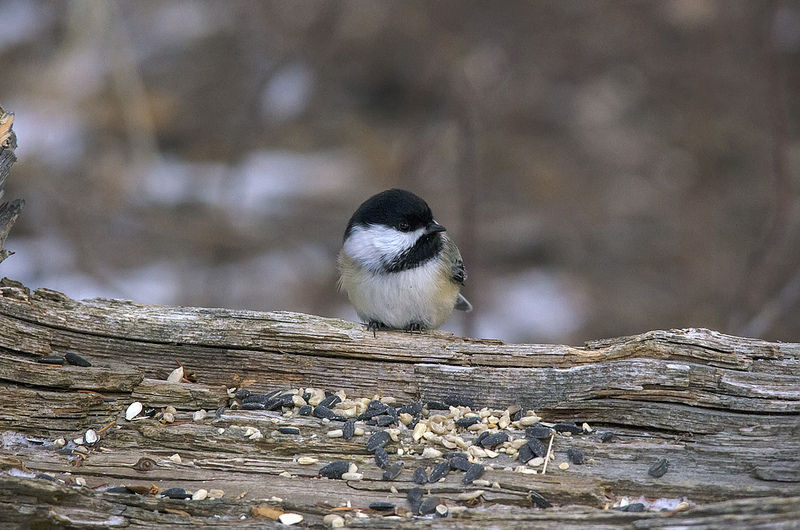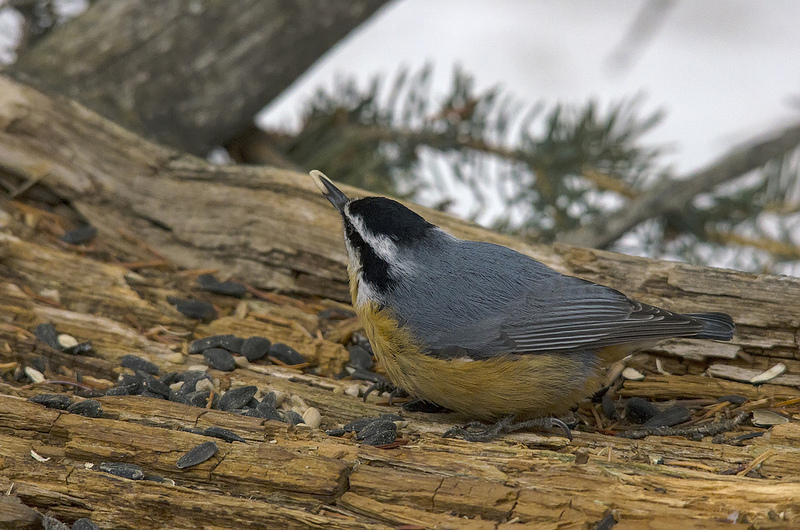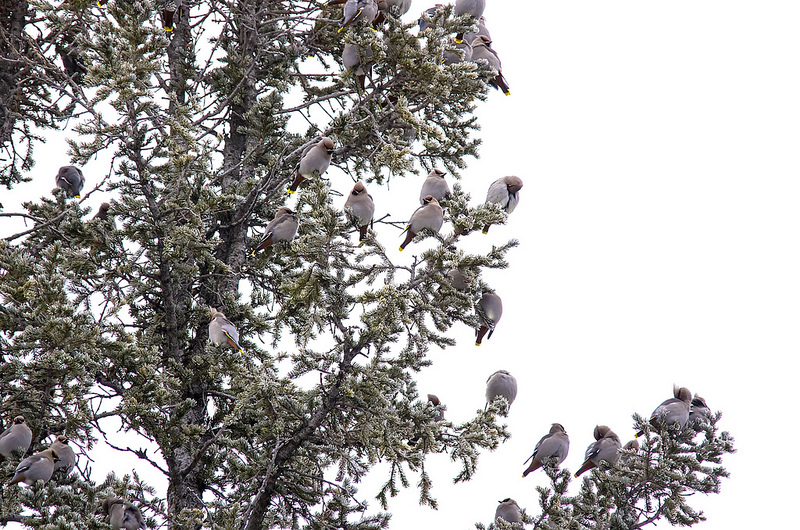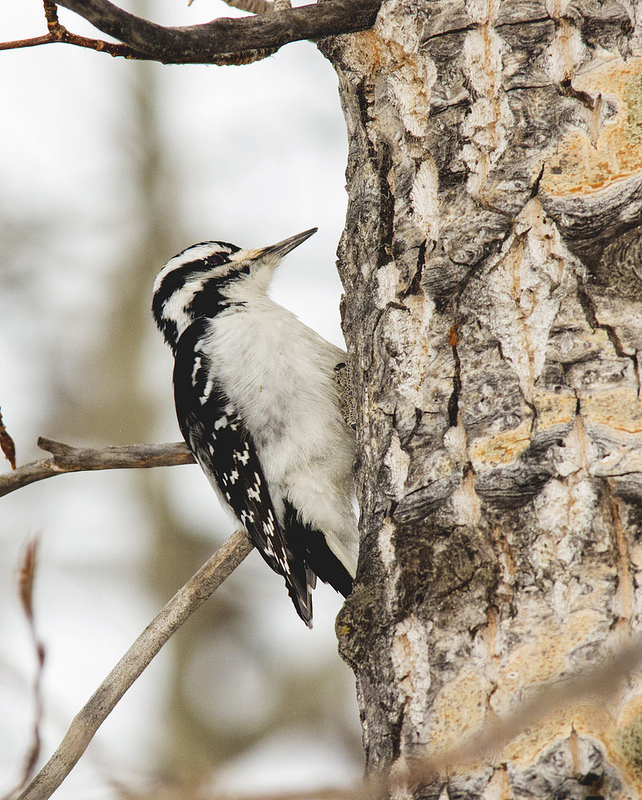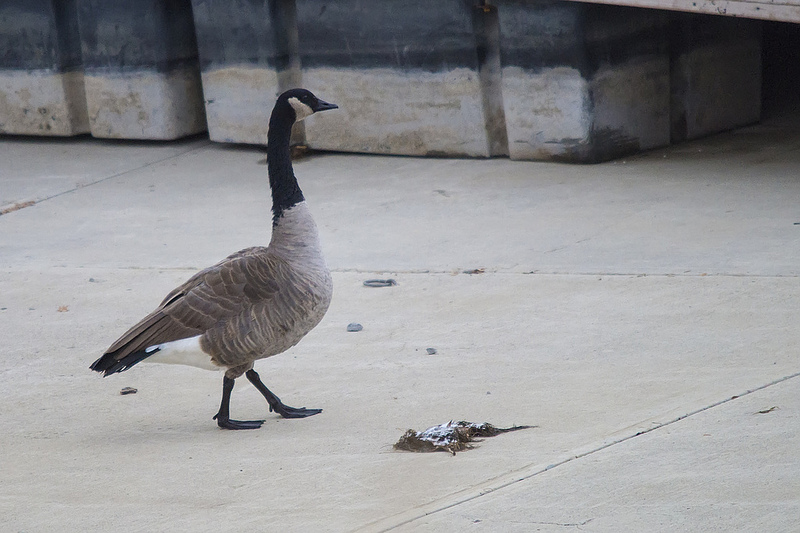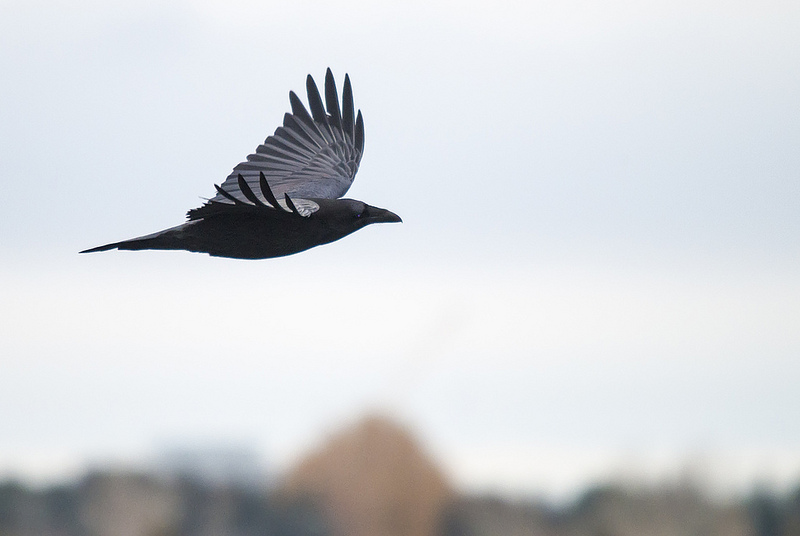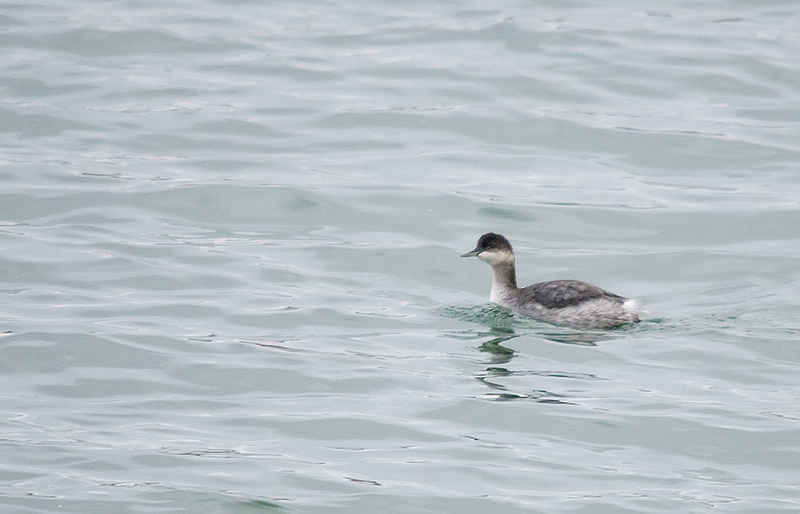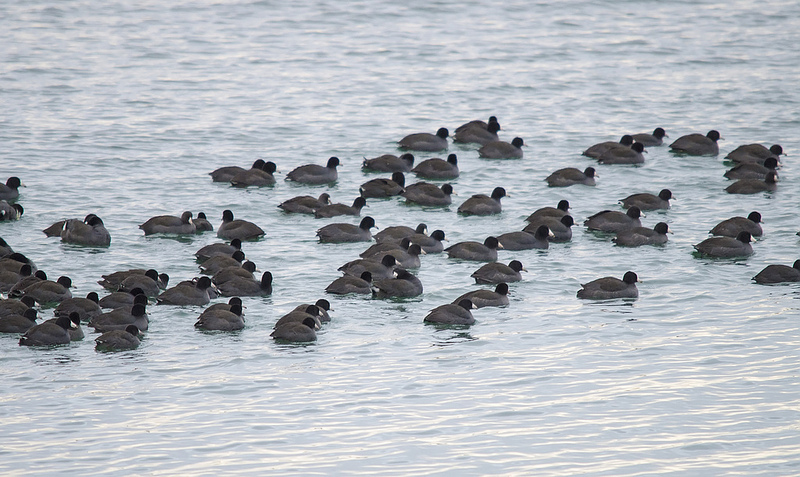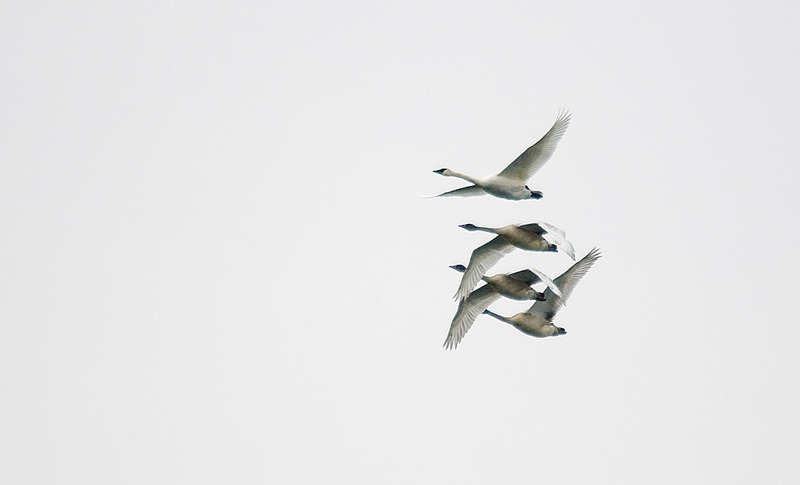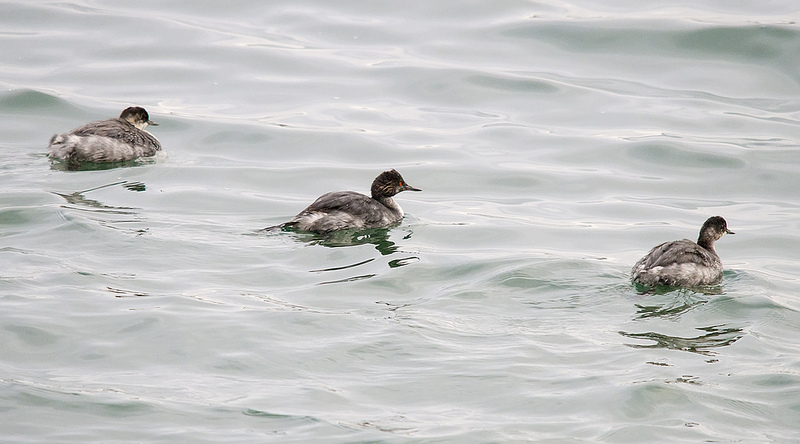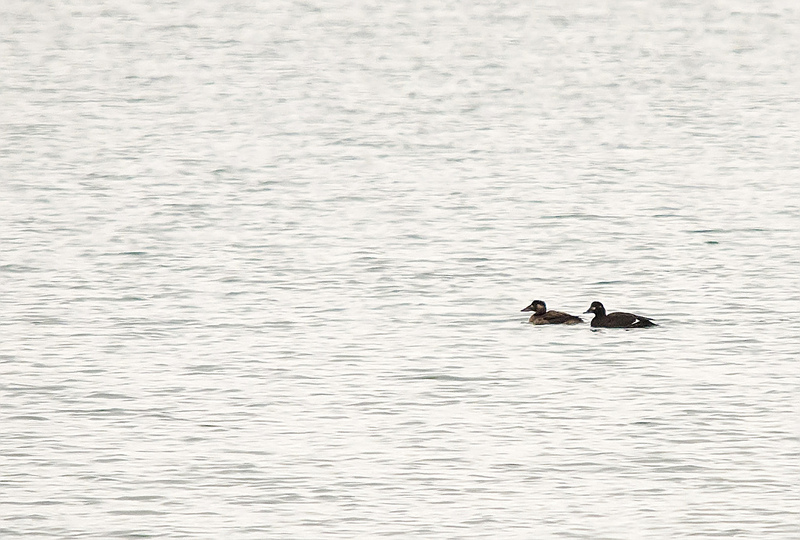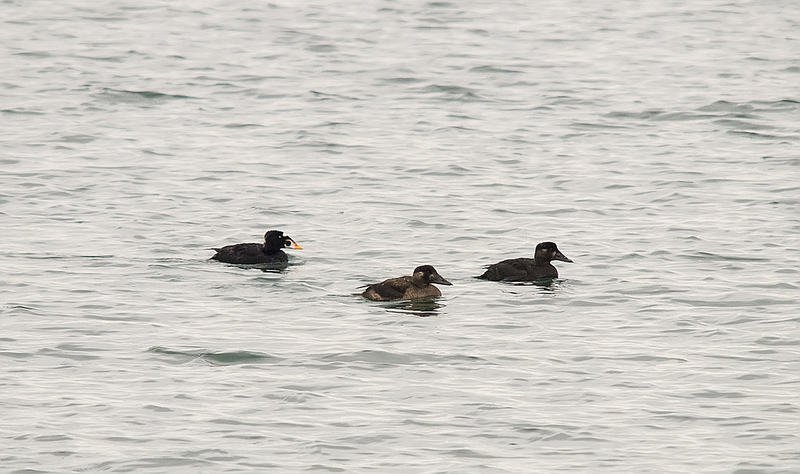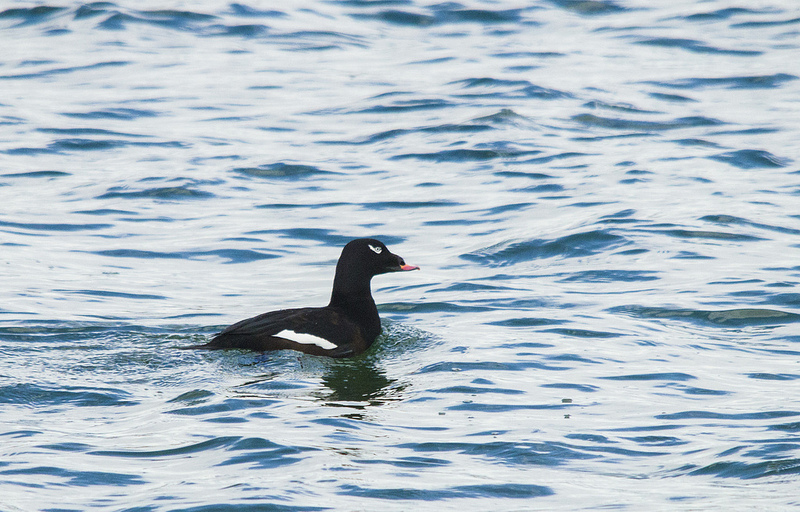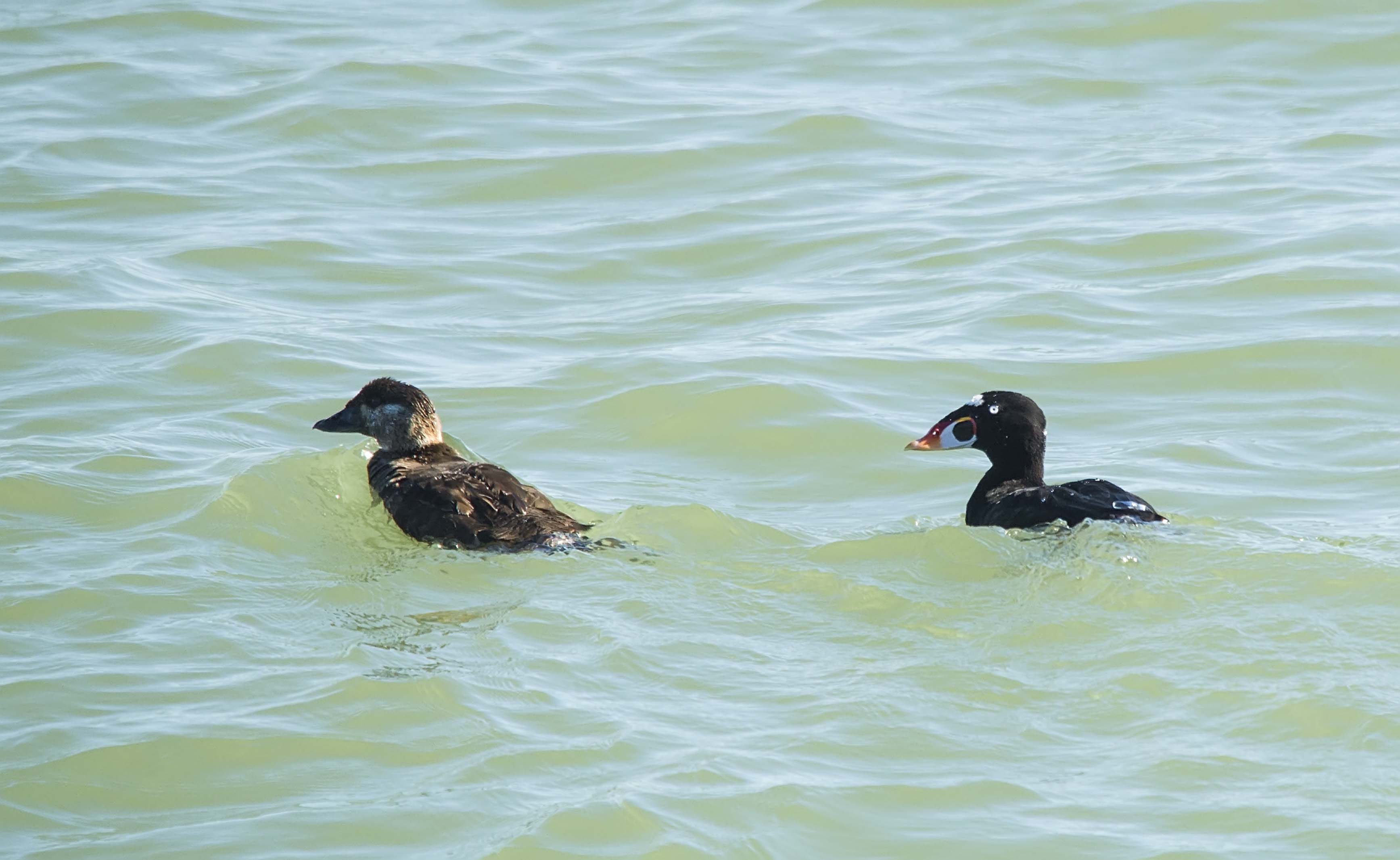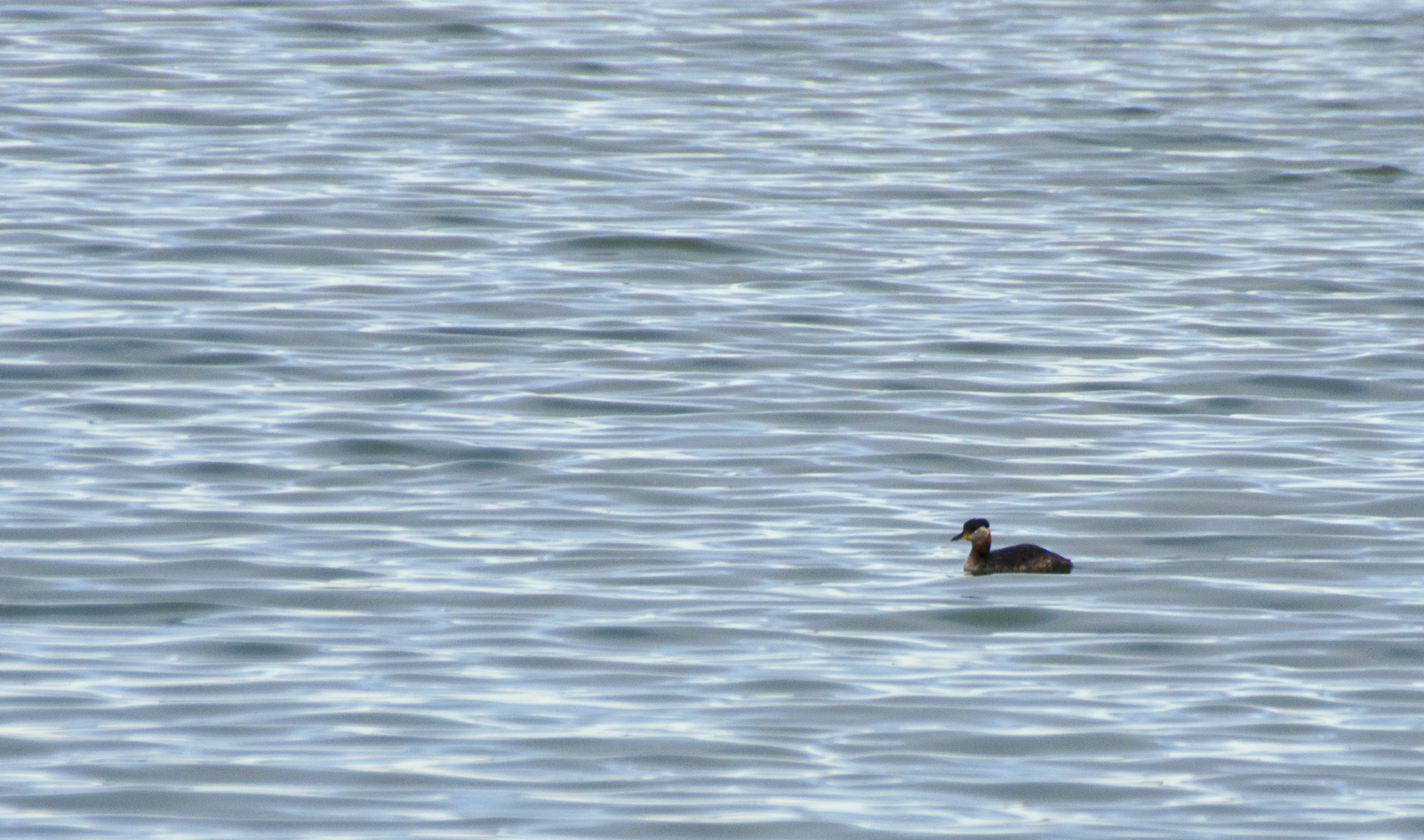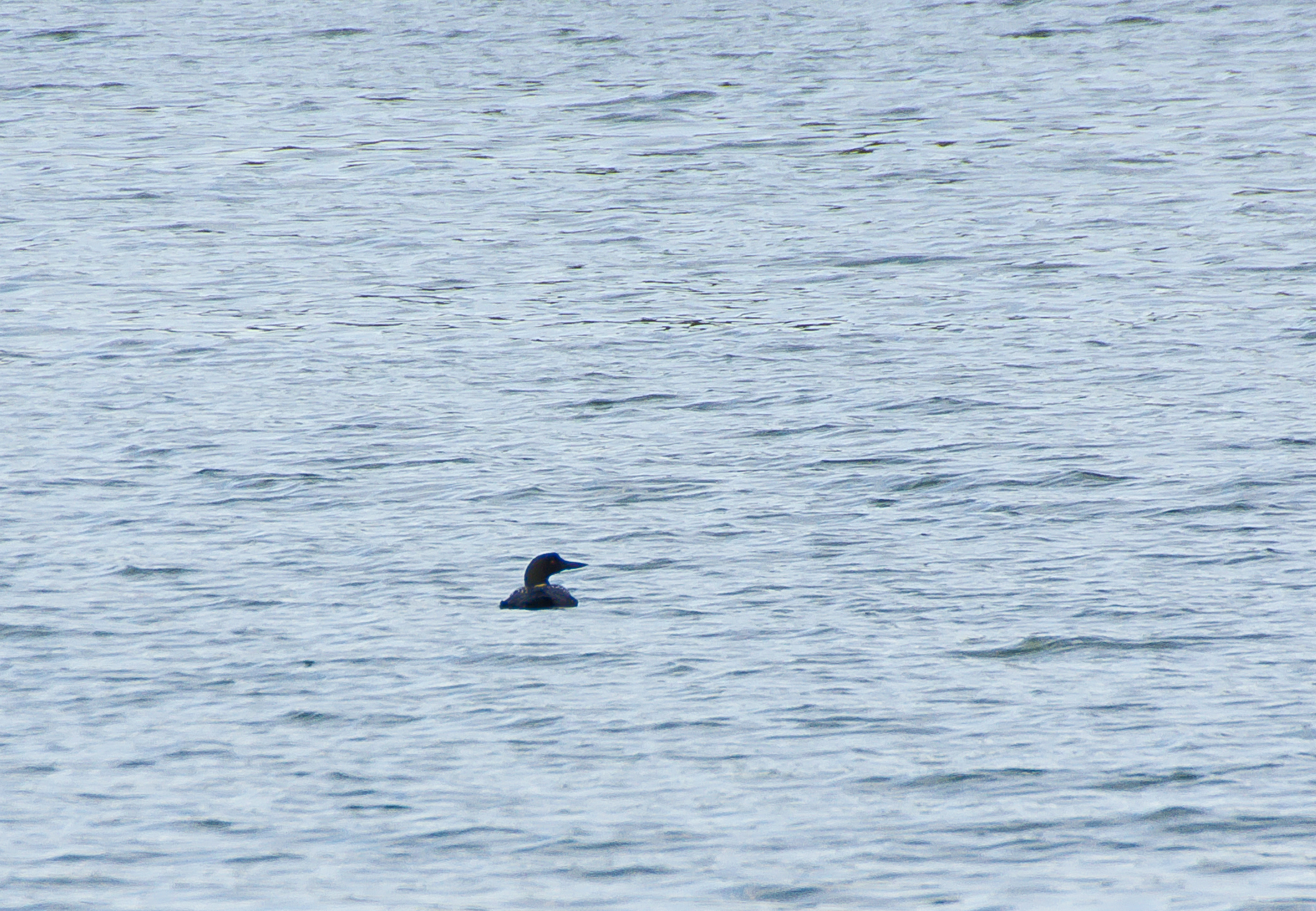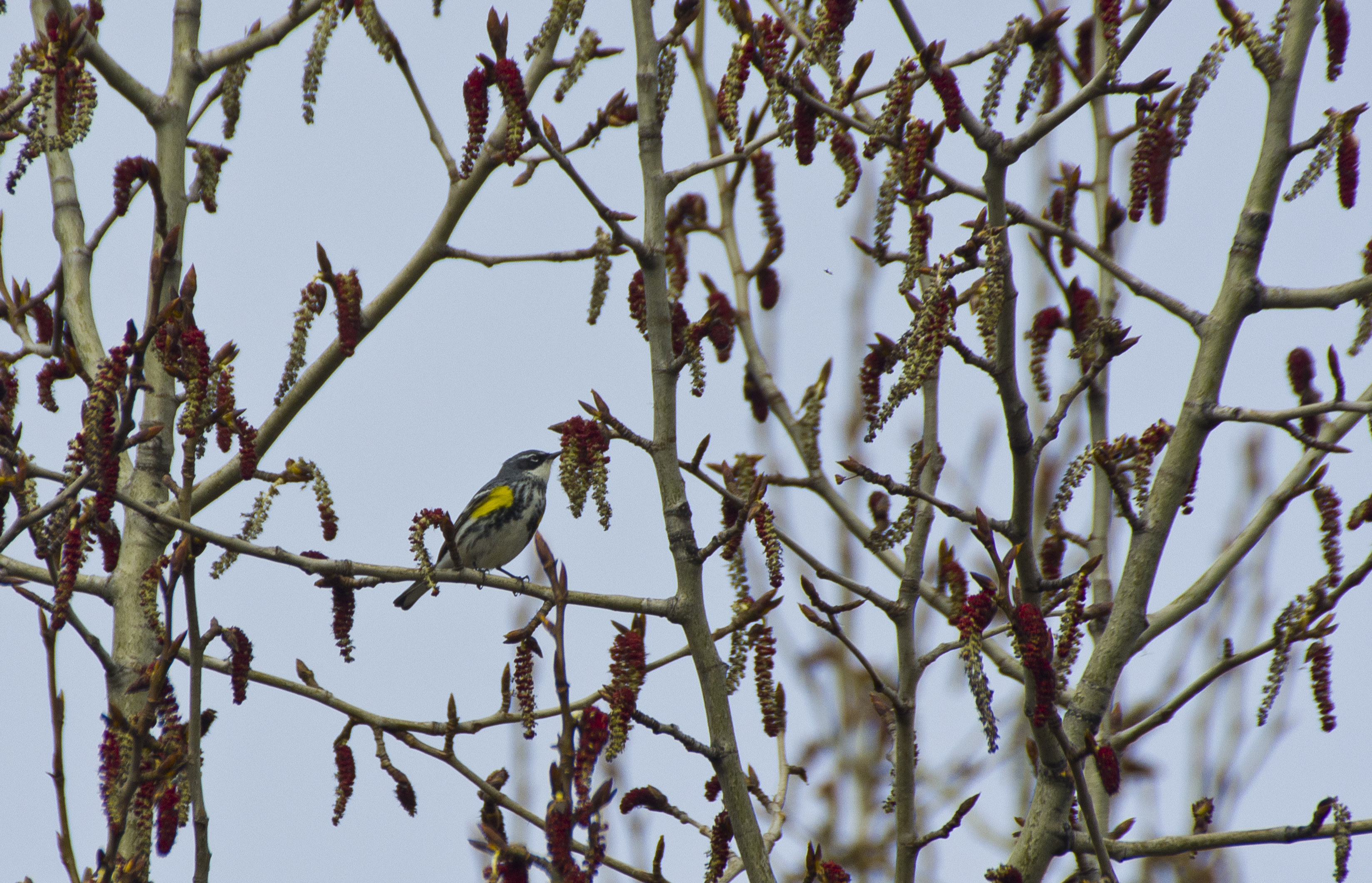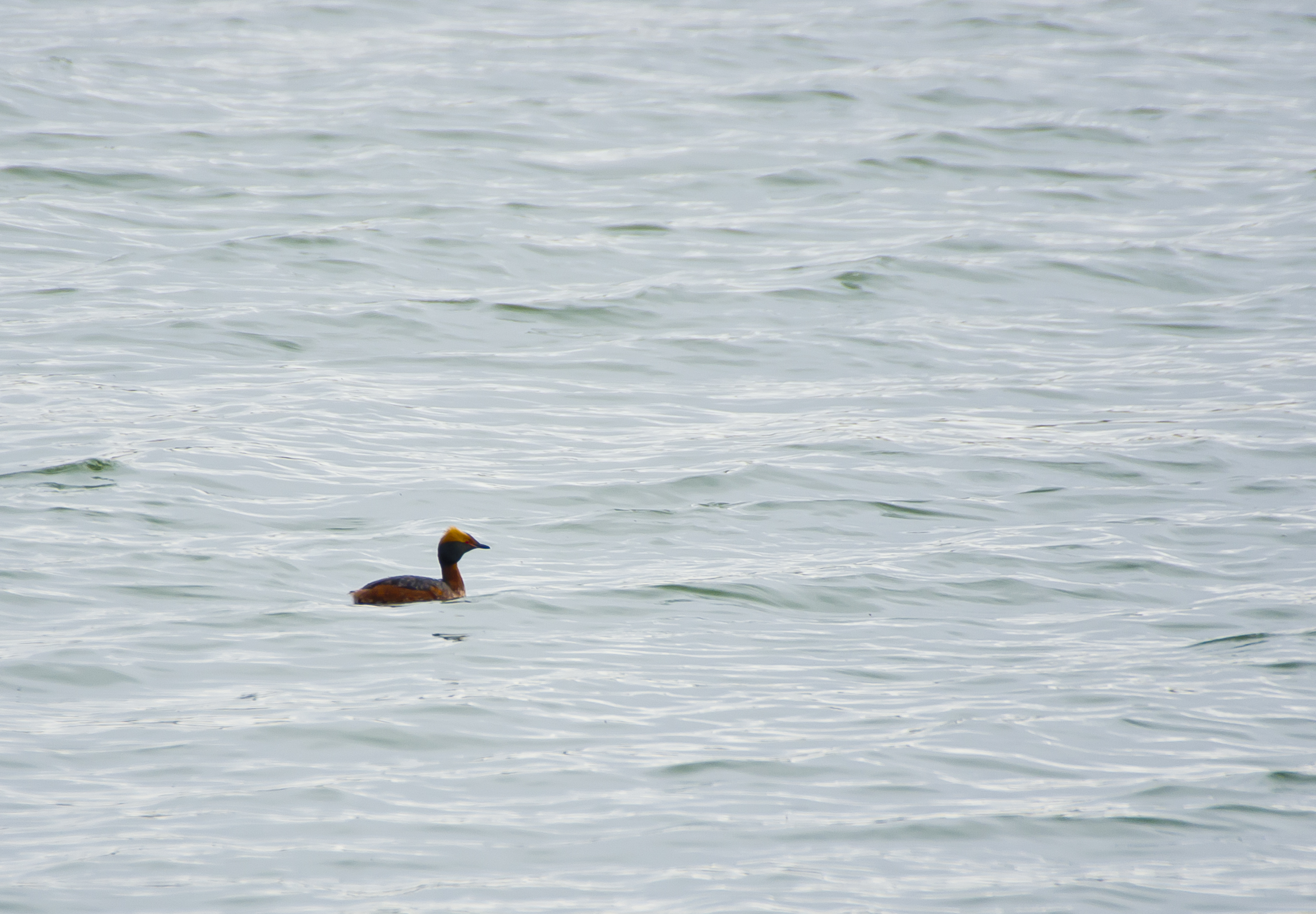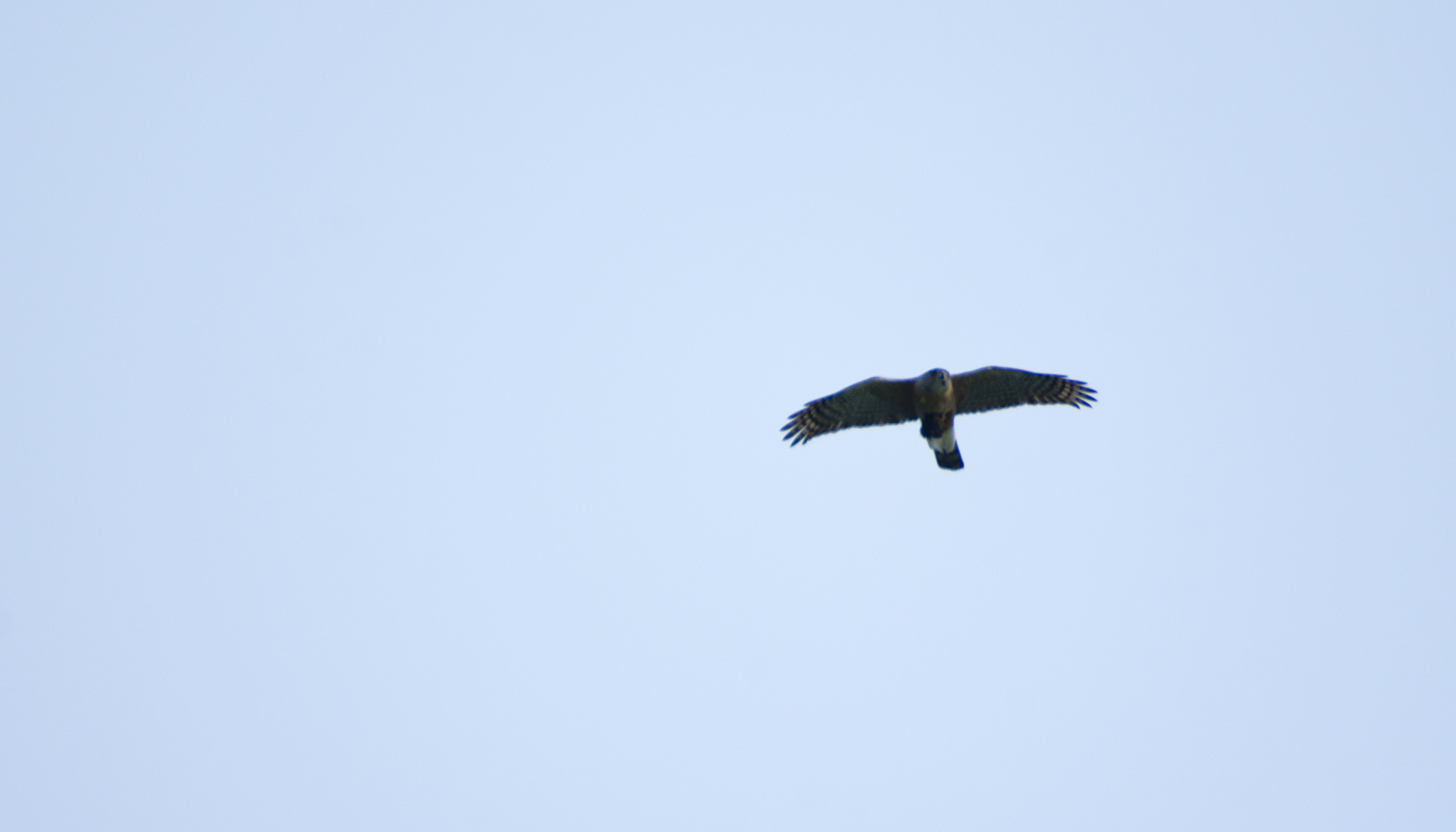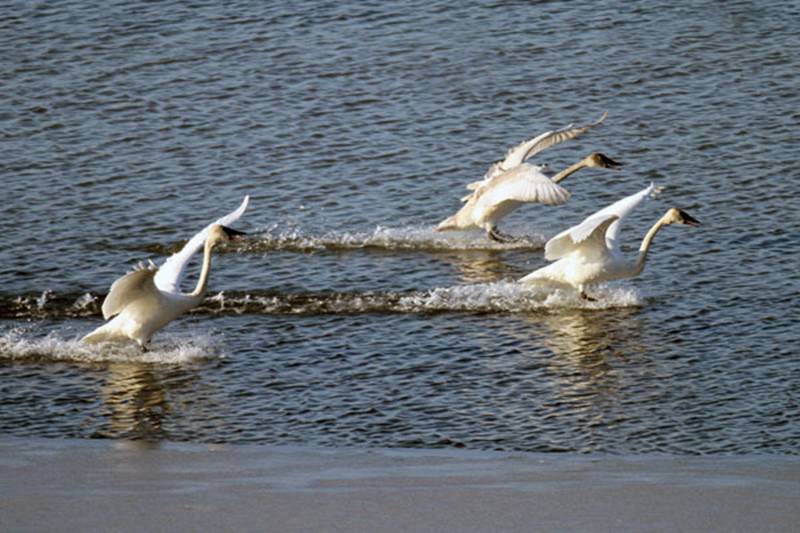Posted by Dan Arndt
Before I start this post, I want to mention that this week’s entry is going to include some photos from a visit I took to the park a week ago as well, partly because there was a significant paucity of expected birds here this week, but also to highlight a local rarity that passed through late last week as well. The usual map will also indicate the location of the older photos.
This week’s location was South Glenmore Park, with the goal in mind to see some migrating waterfowl and other associated water birds, and to highlight that with some of the boreal and parkland birds along the north-facing slope of the Glenmore Reservoir. While we did have some incredibly memorable experiences with the latter, the uncannily quiet morning in general led to my decision to include some photos from last week as well.

South Glenmore Park and Glenmore Reservoir
Our morning started off on a high note, with one species I don’t know if I’ve ever actually posted a photo of to this blog. While House Sparrows are invasive, and by far my most numerous feeder bird at home, they’re more often heard than seen out on our walks, and even then, not one we get more than four or five times a season, since our walks are in more natural areas. I do think they’re quite an attractive bird overall, and one of the few sparrows where one can easily tell the males and females apart.
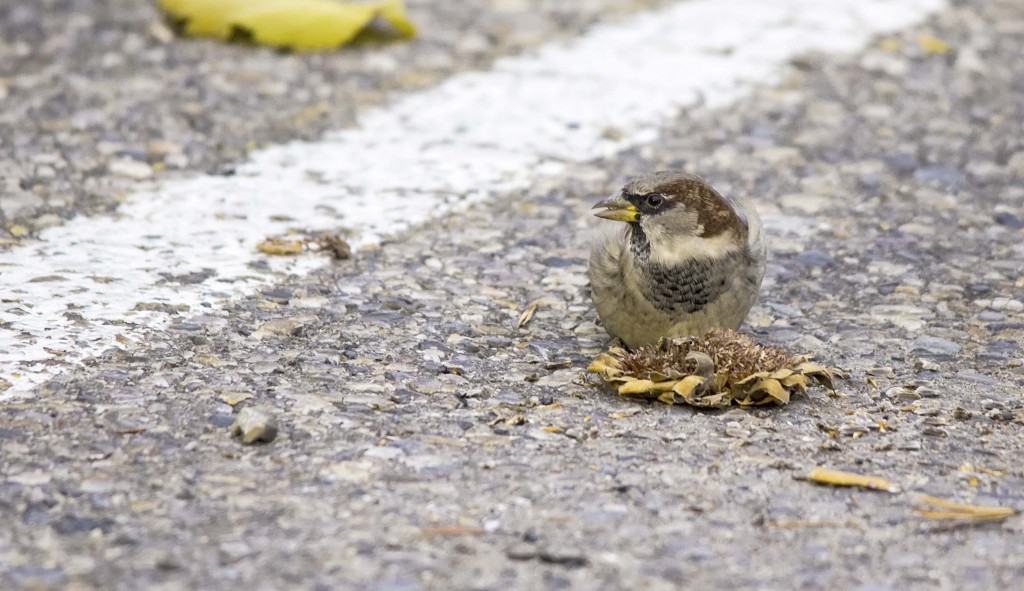
male House Sparrow
Pentax K-5 + Sigma 150-500@500mm
1/500sec., ƒ/6.3, ISO 1600
As we scanned the Glenmore Reservoir a few minutes later, it was clear just how quiet the day was going to be. The only bird on the water was a single Common Loon off in the distance. I mentioned in a previous post that the floods this summer flushed all the vegetation, and as such, all of the aquatic life out of the reservoir, meaning that any birds that touch down on the reservoir overnight typically are gone either before or shortly after dawn, as there’s next to nothing around for them to eat. One exception was a Sabine’s Gull that stuck around for three days last week. A hatch-year bird, by all indications, and as such, was incredibly unwary of people. When I took this photo, a group of workers at the Sailing Club to the left of the frame was moving around a few boats, and at the shop a hundred meters or so away, repairs were well underway with the constant din of saws, hammers, and lathes hard at work.
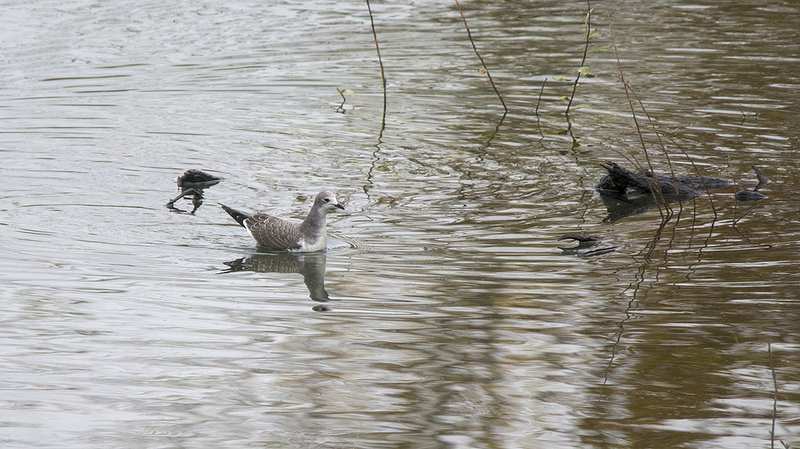
Sabine’s Gull – October 10, 2013
Pentax K-5 + Sigma 150-500@500mm
1/500sec., ƒ/6.3, ISO 500
Early in our walk, the Common Loon was quite far off, but after we scanned the reservoir and began our walk down the slope to the lower pathway, it took off and flew into one of the bays a bit further west, sitting only a few dozen meters off shore.
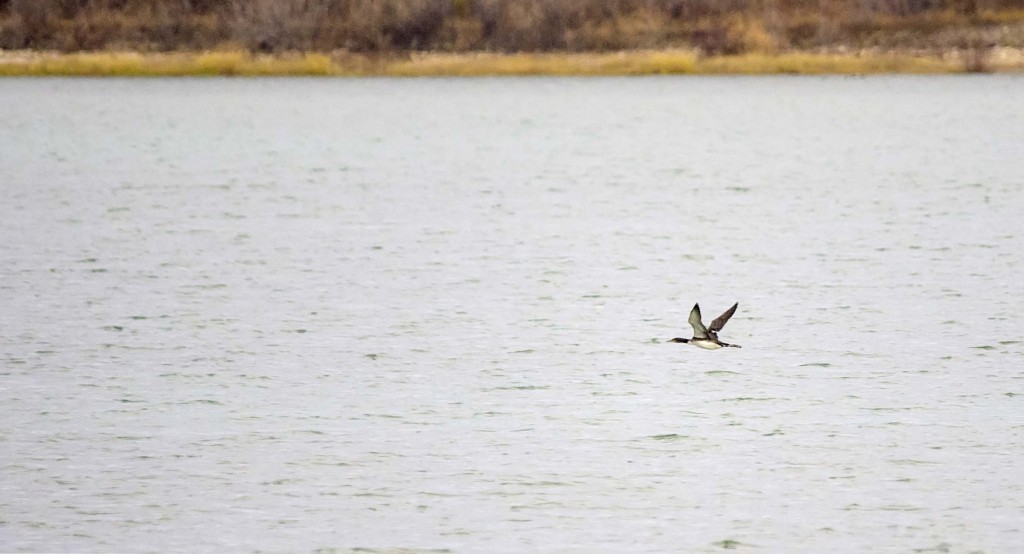
Common Loon in flight
Pentax K-5 + Sigma 150-500@500mm
1/1000sec., ƒ/6.3, ISO 1600
Along the lower pathway, we heard the brief calls of an American Tree Sparrow, and a few Dark-eyed Juncos, but didn’t get very good looks at them. It also seemed that their numbers were far fewer than they had been the week prior, for one reason or another.
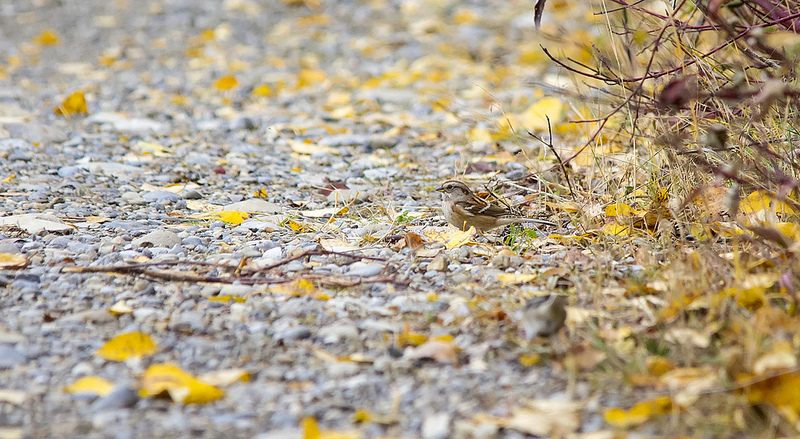
American Tree Sparrow – October 10, 2013
Pentax K-5 + Sigma 150-500@500mm
1/640sec., ƒ/6.3, ISO 1600
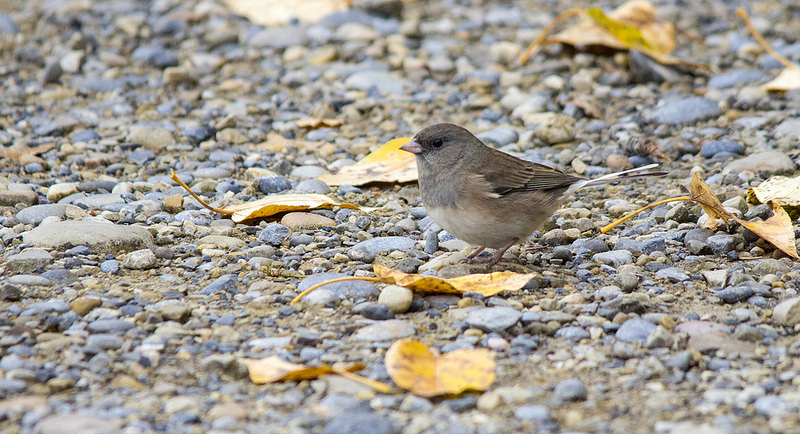
Dark-eyed Junco – October 10, 2013
Pentax K-5 + Sigma 150-500@500mm
1/640sec., ƒ/6.3, ISO 1250
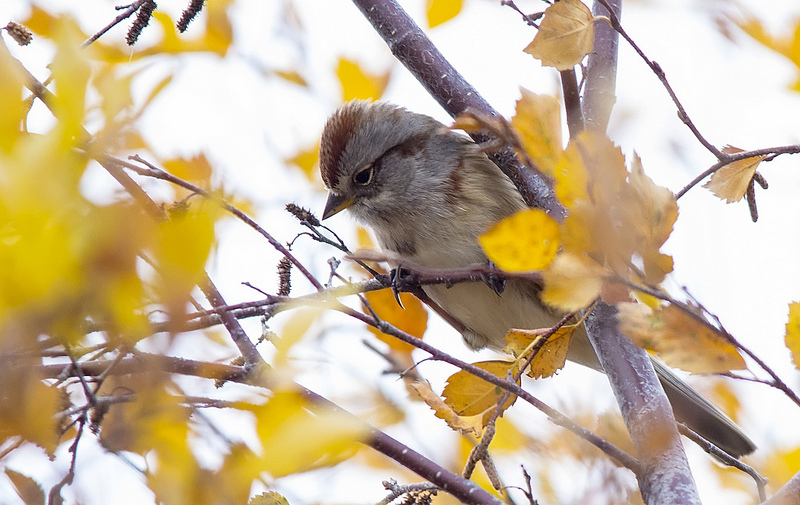
American Tree Sparrow – October 10, 2013
Pentax K-5 + Sigma 150-500@500mm
1/400sec., ƒ/6.3, ISO 1000
The distant Common Loon flight was quite reminiscent of the Sabine’s Gull of the week prior, flying along an almost identical path. In this photo of the Sabine’s Gull, you can see two very distinct field marks for identifying the species: both the jet black primary flight feathers, and the bold, pure white triangle formed by the secondaries and tertials are great identifying marks for the Sabine’s Gull.
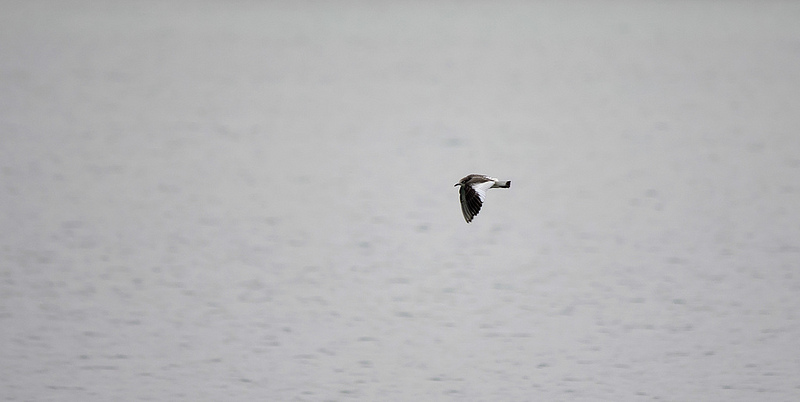
Sabine’s Gull in flight – October 10, 2013
Pentax K-5 + Sigma 150-500@500mm
1/400sec., ƒ/6.3, ISO 200
Our first looks at the Common Loon up close were fairly satisfying, but if you look closely in the photo of it in flight above, it appears to have suffered some damage to its flight feathers, which was pronounced when we were able to view it closer as it spread its wings twice to dry them off. Whether the damage is from an injury, or a late molt, one way or another this little bird is in for a rough few weeks.
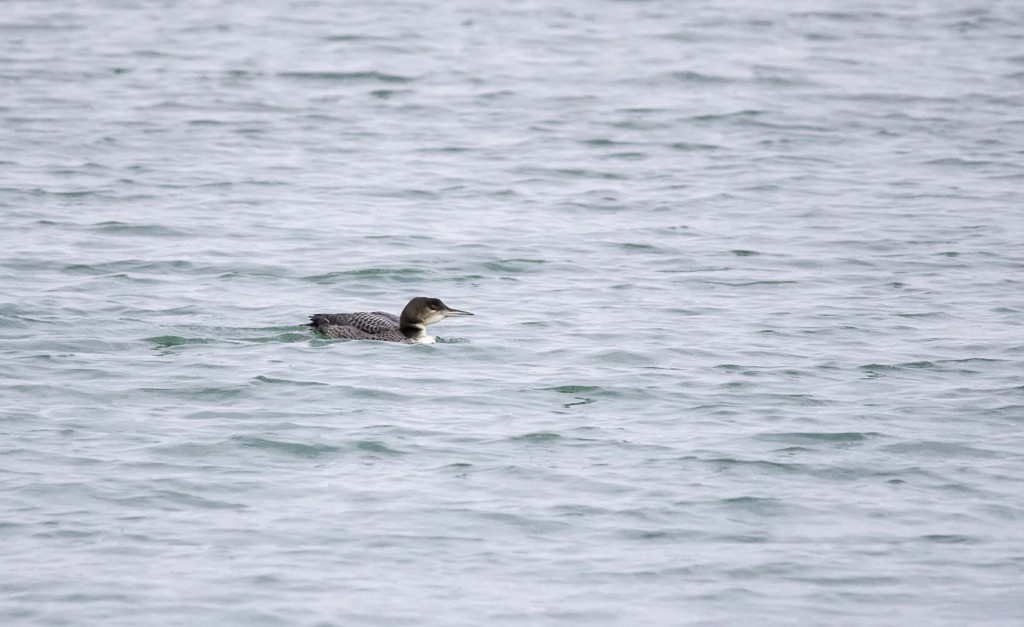
Common Loon
Pentax K-5 + Sigma 150-500@500mm
1/1000sec., ƒ/6.3, ISO 1000
And then came the quiet. For the next twenty or so minutes we walked along, feeding some Black-capped Chickadees, hearing a Golden-crowned Kinglet or two, but seeing almost nothing close on the reservoir. The most excitement we had was watching a Bald Eagle harass an unseen water bird (likely an American Coot) for a good ten minutes before tiring of the chase and perching nearby, just before we headed up and away from the reservoir.
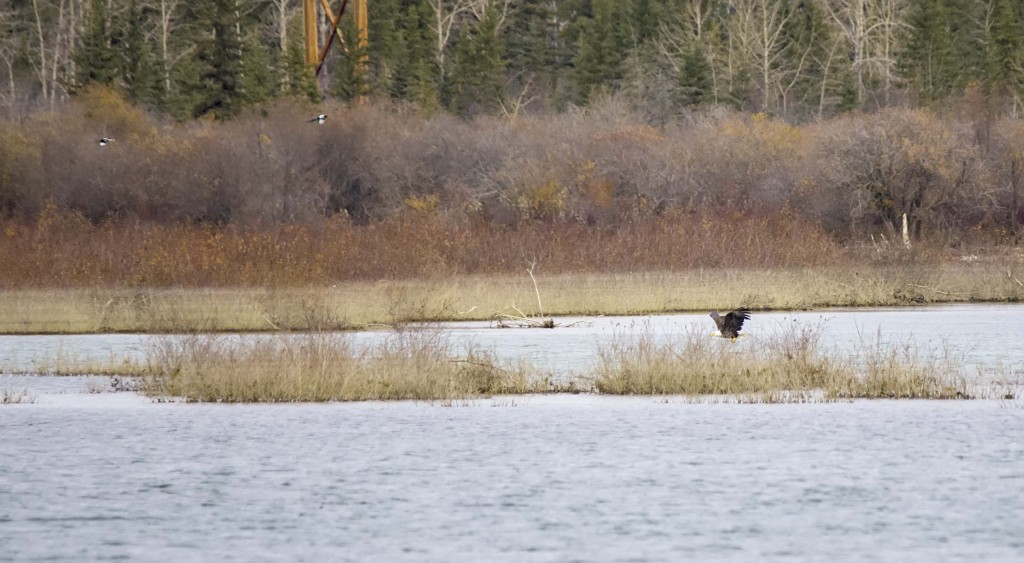
Bald Eagle
Pentax K-5 + Sigma 150-500@500mm
1/1000sec., ƒ/6.3, ISO 1600
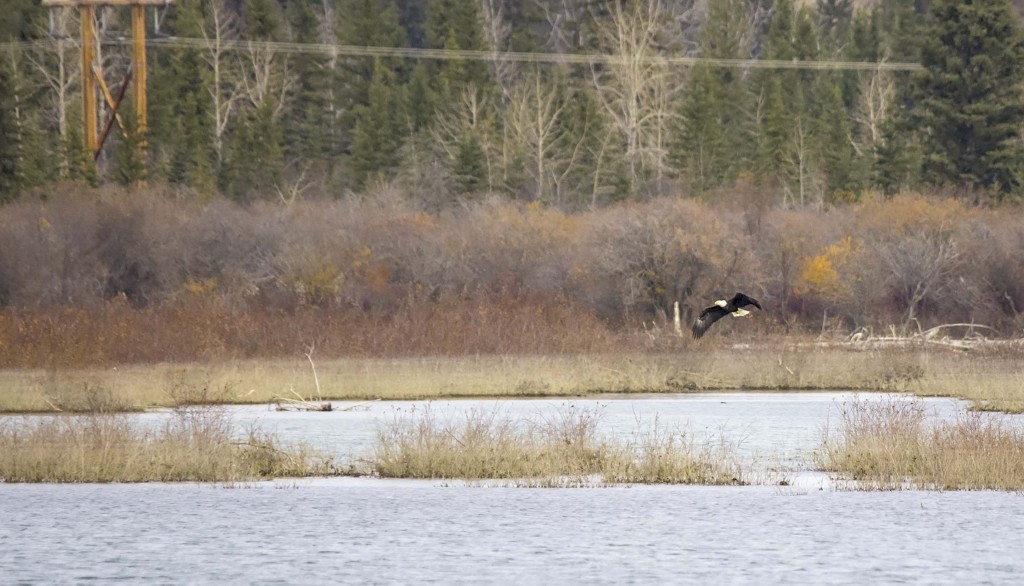
Bald Eagle
Pentax K-5 + Sigma 150-500@500mm
1/1000sec., ƒ/6.3, ISO 1600
Walking along the upper pathway was just as eerily quiet. We passed through at least three small flocks of Black-capped Chickadees on the upper trail before hearing the distinct call of a Pileated Woodpecker, a nice surprise on any walk. It appeared that a Cooper’s Hawk was harassing a small family of Pileated Woodpeckers. No less than three of them were flying back and forth along the upper ridge, until a flock of about ten Black-billed Magpies came in and flushed the hawk away. Unfortunately, the Pileated Woodpeckers stayed well away from the trail we were on, allowing very few photo opportunities.
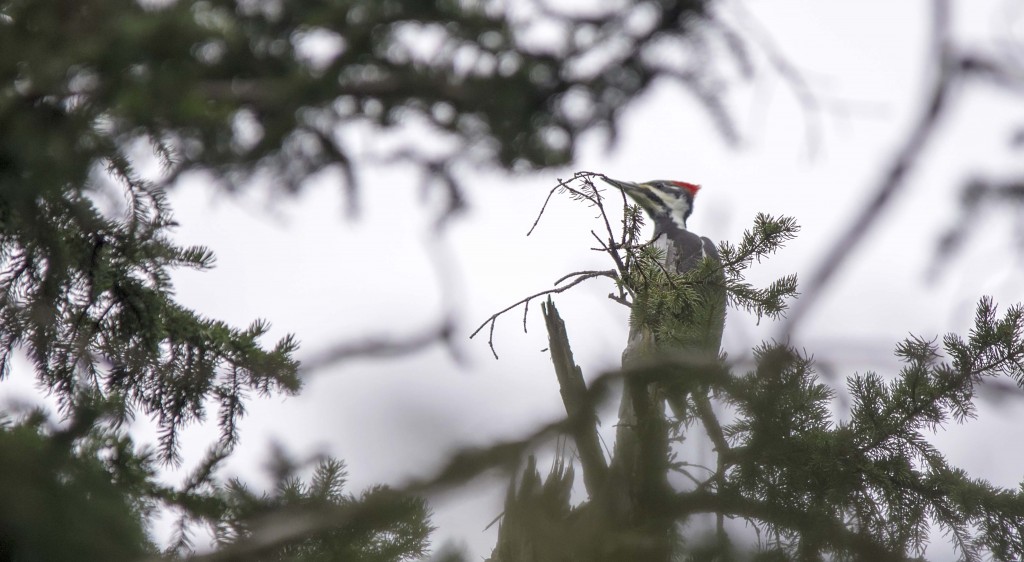
Pileated Woodpecker
Pentax K-5 + Sigma 150-500@500mm
1/500sec., ƒ/6.3, ISO 1600
And to add insult to injury, that was our last good sighting of anything for the day. We did have a really nice view of the Calgary skyline from the pathway as we approached the parking lot, and a surprise visit by a Common Raven that flew in close to us as we prepared to leave.
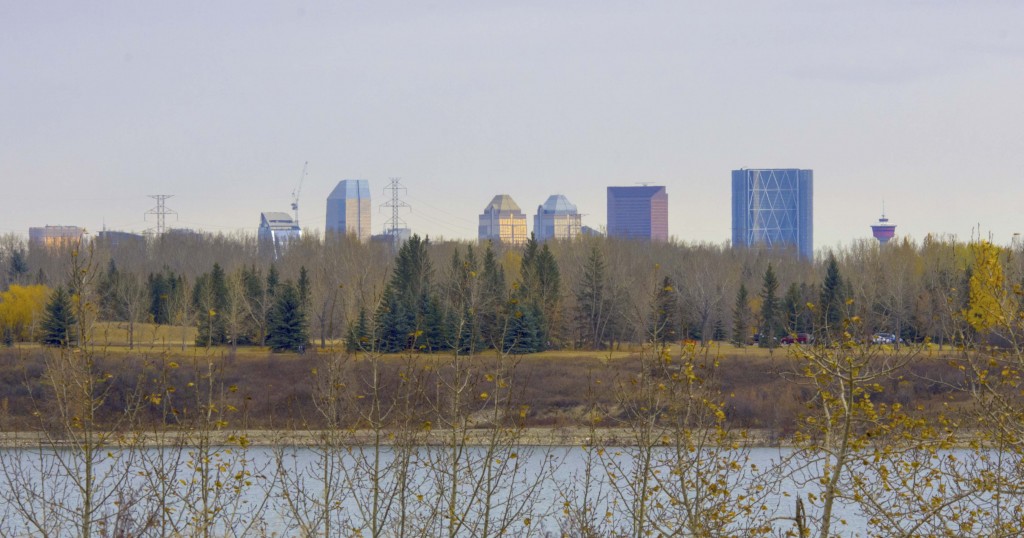
Calgary skyline
Pentax K-5 + Sigma 150-500@150mm
1/320sec., ƒ/13, ISO 640
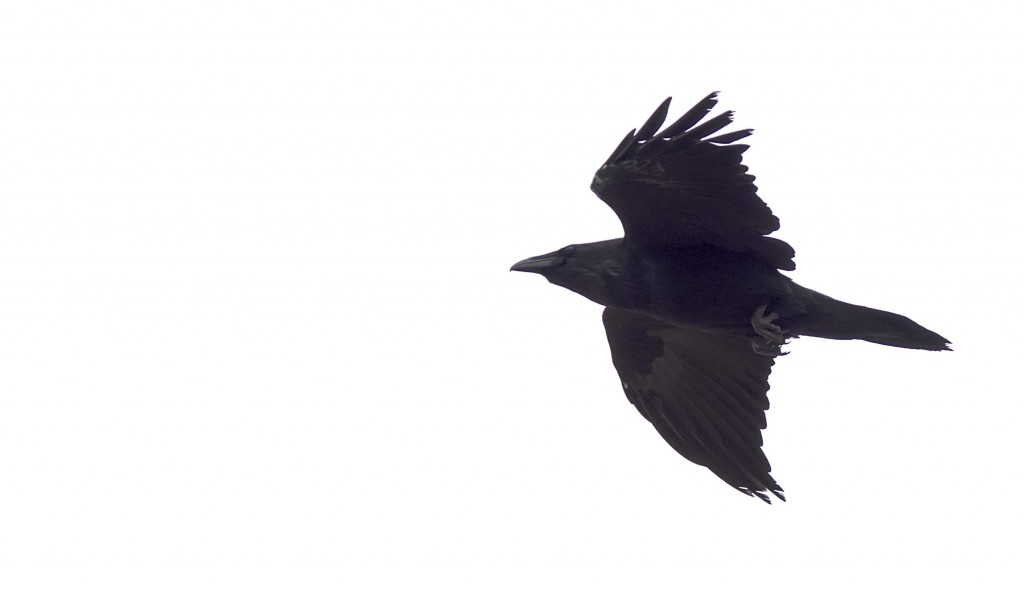
Common Raven
Pentax K-5 + Sigma 150-500@500mm
1/640sec., ƒ/6.3, ISO 320
It’s not often you get close looks at Common Loons on the reservoir, so after the group left, I made an attempt to get close to the loon we’d seen earlier, and I was not disappointed. It seemed to not be particularly wary of my approach, and I spent a good 10 minutes with the bird before it swam out away from shore.
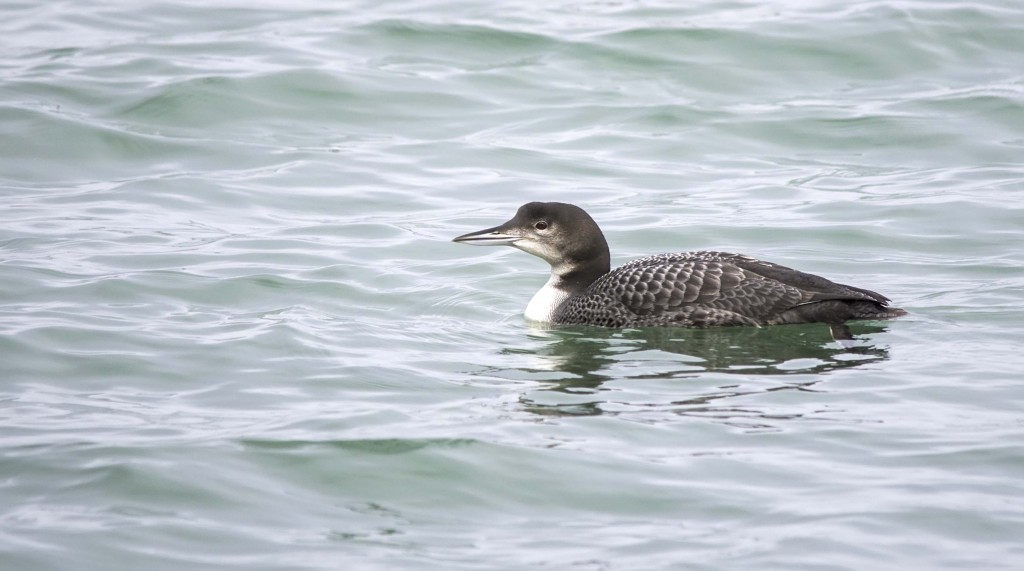
Common Loon
Pentax K-5 + Sigma 150-500@500mm
1/640sec., ƒ/6.3, ISO 500
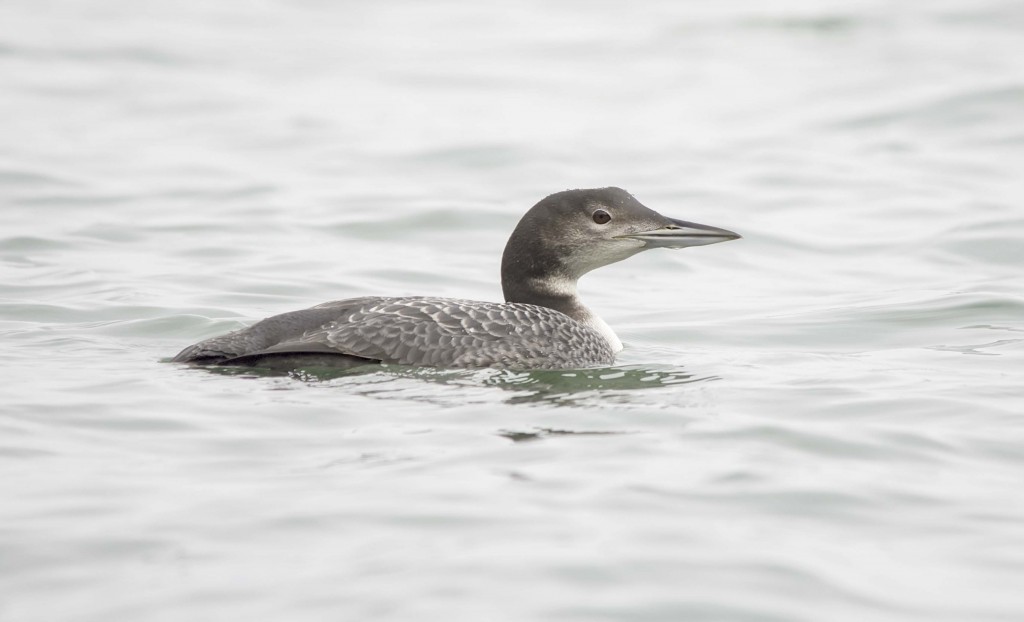
Common Loon
Pentax K-5 + Sigma 150-500@500mm
1/640sec., ƒ/6.3, ISO 800
Thanks again for reading! Have a good week, and good birding!
